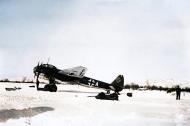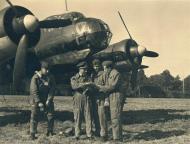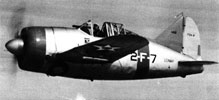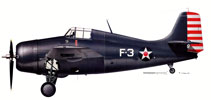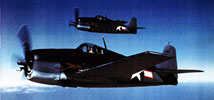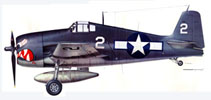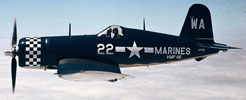The Official Chronology of the U.S. Navy in World War II
United States Navy aircraft carrier USS Rangera CV-4
-lies-at-anchor-1940-01.jpg) |
-as-she-lies-at-anchor-at-Pearl-Harbor-Hawaii-01.jpg) |
Class overview
Operators: United States Navy
Preceded by: Lexington class
Succeeded by: Yorktown class
Built: 1931–34
In commission: 1934–46
Completed: 1
Scrapped: 1USS Ranger (CV-4) basic facts
Name: USS Ranger
Ordered: 1 November 1930
Builder: Newport News Shipbuilding & Drydock Co.
Laid down: 26 September 1931
Launched: 25 February 1933
Sponsored by: Lou Henry Hoover (the wife of the President of the United States)
Commissioned: 4 June 1934
Decommissioned: 18 October 1946
Struck: 29 October 1946
Honors and awards: American Defense Service Medal (A device), American Campaign Medal, European-African-Middle Eastern Campaign Medal (2 stars), Asiatic-Pacific Campaign Medal, World War II Victory Medal
Fate: Acquired for scrap for $259K on 31 January 1947General characteristics (as built)
Type: Aircraft carrier
Displacement: As built: 14,576 long tons (14,810 t) (standard) 17,577 long tons (17,859 t) (full load)
Length: 730 ft (220 m) (w/l) 769 ft (234 m) (o/a)
Beam: 80 ft (24 m) (waterline) 109 ft 5 in (33.35 m) (overall)
Draft: 22 ft 4.875 in (6.82943 m)
Installed power: 53,500 shp (39,900 kW)
Propulsion: 2 × steam turbines 6 × boilers 2 × shafts
Speed: 29.3 kn (33.7 mph; 54.3 km/h)
Range: 10,000 nmi (12,000 mi; 19,000 km) at 15 kn (17 mph; 28 km/h)
Complement: 216 officers and 2,245 enlisted men including embarked air group(as built) 2,148 (1941)
Sensors and processing systems: CXAM-1 RADAR
Armament: 8 × 5 in (130 mm)/25 cal anti-aircraft guns 40 × .50 in (13 mm) machine guns
Armor: Belt: 2 in (5.1 cm) Bulkheads: 2 in (5.1 cm) Deck: 1 in (2.5 cm) (over steering gear)
Aircraft carried: 86 (maximum) 76 (normal)
Aviation facilities: 3 × elevators 3 × catapults
USS Ranger (CV-4) was an interwar United States Navy aircraft carrier, the only ship of its class. As a Treaty ship, Ranger was the first U.S. vessel to be designed and built from the keel up as a carrier. She was relatively small, just 730 ft (222.5 m) long and under 15,000 long tons (15,000 t), closer in size and displacement to the first US carrier - Langley - than later ships. An island superstructure was not included in the original design, but was added after completion.
Deemed too slow for use with the Pacific Fleet's carrier task forces against Japan,[1] she spent most of World War II in the Atlantic Ocean, where the German fleet, the Kriegsmarine, was a weaker opponent. Ranger saw combat in that theater and provided air support for Operation Torch. In October 1943, she fought in Operation Leader, air attacks on German shipping off Norway. She was sold for scrap in 1947.
USS Ranger (CV-4) just after launching at Newport News Virginia 25th Feb 1933
USS Ranger (CV-4) just after launching at Newport News Virginia 25th Feb 1933
Design and construction
Work began in 1925 on the design of a fourth aircraft carrier for the US Navy, as a follow-on to the small Langley, converted from a collier, and the large Lexington and Saratoga, which were in the process of being converted from incomplete battlecruisers. Carrier number four was the Navy's first opportunity to design a ship built as an aircraft carrier.[2] Preliminary design work occurred before extensive operation of the preceding three. Having limited experience to draw on, key characteristics of the design were derived from wargaming experience at the U.S. Naval War College. During design and construction many alterations would occur as a result of increasing experience with Langley, Lexington, and Saratoga.[3][4]
The major limitation constraining any design was the Washington Naval Treaty of 1922. After Lexington and Saratoga,[N1] there were 69,000 long tons (70,000 t) remaining for construction of aircraft carriers. This resulted in modeling for three 23,000 long ton carriers, four 17,250 ton carriers, and five 13,800 ton carriers.[6] Of the three sizes, the smaller 13,800 was selected because the five hulls would have the largest aggregate aircraft capacity. Wargames had indicated that severe attrition to airframes and hulls would occur in any war. The college's solution was to maximize the number of aircraft and hulls allowable under the treaty.[4][5][N2]
Initially, Ranger was designed as a flush-decker, like Langley, with nothing extending above the flight deck. Keeping the flightdeck clear of obstacles complicated the arrangement of machinery. The smoke from her six boilers was vented up six small stacks, with three on each side of the aft hangar. The stacks were hinged and were rotated to a position parallel with the hangar deck during flight operations. The unusual stack arrangement is a carry-over from her flush-deck design. When an island was added midway through construction, rebuilding the uptakes into the island was rejected as too costly.[8] The further aft the boilers were placed, the further aft the stacks could be too, dispersing smoke over less of the deck. Concerns about smoke dispersion impacted propulsion design. Size of the plant influenced both the placement of the boilers and the amount of smoke generated. A moderate 53,000shp power plant could be placed further aft than a 100,000shp plant without affecting trim. The smaller plant also produced fewer gasses than a 100,000shp plant. Due to space limits, the carrier was equipped with geared turbines.[9]
Nearly her entire upper deck was devoted to the hangar. The large height and open girders of the flight deck structure allowed for stowage of spare fuselages. The hangar deck was semi-open and had large roll-up metal curtain doors which could be closed in bad weather. The open hangar was adopted to allow the installation of two catapults on the hangar deck for the launching of observation aircraft. The catapults were dropped to save cost. Ranger also incorporated a gallery deck between the flight deck and hangar deck.[10]
The flight deck was a light superstructure sheathed in wood. Designed as a weight-saving measure, the light wood deck was found to be easily repairable.[11] Three elevators were provided to move aircraft between the flight deck and hangar deck. Outriggers at the edge of the flight deck provided extra stowage for aircraft on deck. The carrier operated 76 aircraft as constructed; equal to Lexington with half the displacement.[12]
The carrier was one of the first U.S. Navy ships mounted with light automatic weapons to defend against dive-bombing attacks, and was initially armed with forty .50 cal machine guns.[13] Complementing the machine guns were eight dual-purpose 5-inch (127 mm)/25 caliber guns controlled by two Mark 33 directors. The machine guns were arrayed along the gallery and the 5-inch guns arrayed with one at each corner of the gallery, two at the bow, and two on the fantail.
Construction, refit, and modernization
Authorized by Congress on 13 February 1929, the U.S. Navy opened bids for the construction of the aircraft carrier on 3 September 1930. Newport News Shipbuilding and Drydock Company outbid Bethlehem Shipbuilding Corporation and New York Shipbuilding Company for the contract. In November, Newport News Shipbuilding received the contract to build her. The contract price was 15.2 million dollars.[14] On 10 December, the name Ranger was assigned to the planned aircraft carrier.[15]
Ranger was laid down on 26 September 1931 by the Newport News Shipbuilding & Drydock Co., Newport News, Virginia, and launched on 25 February 1933, sponsored by Lou Henry Hoover, First Lady of the United States.[16] Late in construction the design was modified to include an island, increasing her displacement to 14,500 tons.[12] Commencing trials on 1 May 1934, Ranger made 30.35 kn and generated 58,700 shp.[17] She was commissioned at the Norfolk Navy Yard on 4 June 1934, with Captain Arthur L. Bristol in command.[18]
To save money, Ranger was initially designed and commissioned without torpedo stowage or a torpedo bomber squadron. Wasp was designed and commissioned to match. On 17 October 1941 approval was given to install torpedo stowage during the next overhaul in conjunction with the activation of a torpedo squadron. On 10 January 1942 Torpedo Squadron 4 (VT-4) was activated on Ranger.[19]
Across the years many alterations were made to her armament. The first change was to consolidate the 5-in gun battery by pairing the four main deck guns with the four gallery deck guns. The anti-aircraft armament received a major upgrade when six 1.1-in quadruple mounts were installed; the 1.1-in battery replaced a battery of 3-inch (76 mm)/50 caliber guns installed months before as placeholders.[20] In March 1942, the .50 cal machine guns were exchanged for much more capable Oerlikon 20mm cannons.[21] Similarly, the 1.1-in battery was swapped with quadruple Bofors 40mm guns in December 1942.[22] Ranger's ultimate armament was six 40mm quadruple mounts and forty-six 20mm mounts.
On 13 December 1943, Chief of Naval Operations Admiral Ernest King had approved an extensive modernization. Since Ranger's commissioning, the size of carrier aircraft had grown enormously. Her flight deck supports were no longer capable of supporting the weight of a complete, modern air group. Other aircraft operating improvements were contemplated. The aft elevator was to be enlarged, the amidship elevator was to be replaced with a deck-edge elevator, and two flight deck catapults were to be installed. Weight and protection issues were to be solved by blistering the hull. Armament was to be increased with six additional 40mm quadruple mounts. Admiral King favored having the conversions done, but the Bureau of Ships insisted that allocating the manpower and resources required to accomplish this would considerably delay the completion of new aircraft carriers under construction. The full project was indefinitely postponed on 5 April 1944 after the third, increasing estimate.[23] After arriving at New York Harbor on 16 May, Ranger entered the Norfolk Navy Yard to have her flight deck strengthened, new aircraft catapults installed, and radar equipment updated.[24] This provided her with the capability of night fighter-interceptor training.[25]
USS Ranger as a Design Experiment:
The Ranger was the first U.S. Navy aircraft carrier designed from the keel up, and her design was very much experimental. As a result, she carried several unique design features that influenced future carrier designs, both positively and negatively.
Small Hull and Reduced Armor Protection: The Ranger was designed to be smaller and less heavily armored than future carriers like the Essex-class. At 14,500 tons, she was relatively light, but this was largely a product of the restrictions set by the Washington Naval Treaty. To keep within the limits, armor was reduced, and this made her more vulnerable in combat zones. This limitation kept the Ranger largely out of the Pacific Theater, where the risk of direct combat was higher.
Dual-Stack Design: One of the most innovative features was the retractable smokestacks (funnels), which could pivot to the side during flight operations. This was intended to maximize deck space for launching and recovering aircraft. While this idea seemed promising on paper, in practice it created operational complications, and this feature wasn’t replicated in future carriers.
Lighter Weight Air-Group Handling Systems: The Ranger incorporated lighter weight handling systems for her air group, such as aircraft elevators and hangar deck facilities. While these systems allowed for more aircraft to be carried, they were not as robust as later designs, which limited the type of operations the ship could effectively conduct. For instance, this lighter design limited the weight of the planes that could be deployed from her deck compared to larger ships like the later Essex-class carriers.
The USS Ranger (CV-4) was an experimental aircraft carrier and the first U.S. Navy carrier designed from the keel up as an aircraft carrier. Her design incorporated a number of innovative features but also came with certain limitations, particularly compared to the larger and more heavily armored fleet carriers that followed her. Here’s a detailed look at some key aspects of her design:
Flight deck arrangements
The flight deck of the USS Ranger was unique in several ways, reflecting the experimental nature of her design:
Size and Layout: The Ranger's flight deck was 769 feet (234 meters) long, relatively short compared to later carriers, and only 80 feet (24 meters) wide. This limited her ability to handle large numbers of aircraft at one time and restricted the size and weight of the planes she could operate.
Retractable Funnels: One of the distinctive features of the Ranger was her two smokestacks (funnels), which could pivot horizontally and fold outwards to the sides of the ship during flight operations. This was intended to maximize the use of her flight deck for launching and recovering aircraft. While this was an innovative solution, it added mechanical complexity and wasn’t repeated in future U.S. carriers.
Flight Deck Equipment: The Ranger had two elevators to move aircraft between the flight deck and the hangar deck, but these were smaller and less robust than those found on larger carriers, limiting their capacity and efficiency. The ship also had two aircraft catapults, but early in the war, these were inadequate for launching the heavier planes that later became standard.
Hangar Deck: Below the flight deck, Ranger had a large hangar deck for storing and maintaining aircraft. Her hangar deck could carry up to 86 aircraft in various configurations, though this number varied depending on the type and role of the planes onboard. However, her limited hangar space and less efficient aircraft handling systems reduced her operational flexibility compared to later carriers.
Island Structure: The USS Ranger was the first U.S. carrier designed with an integrated island structure (command tower) from the start, whereas earlier carriers like Lexington and Saratoga had islands added after their conversion from battlecruisers. This provided a centralized control point for flight operations but was smaller and less advanced than later carrier designs.
Propulsion
The propulsion system of the Ranger was another area where design choices were influenced by weight and treaty restrictions:
Machinery: USS Ranger had six Babcock & Wilcox boilers feeding steam to geared turbines, which powered two propeller shafts. Her propulsion system could produce up to 53,500 shaft horsepower (shp), giving her a top speed of 29.3 knots (about 34 mph or 54 km/h). While this was fairly fast for the time, it was slower than later fleet carriers, and her lower speed became a tactical limitation, especially in fast-moving combat environments.
Range: Ranger had a range of approximately 12,000 nautical miles at 15 knots, which was adequate for her primary role in the Atlantic and the Mediterranean. However, her smaller fuel capacity and limited endurance would have been problematic for long-range operations in the Pacific, where carriers often operated far from supply lines.
Performance Limitations: The Ranger's smaller size and lighter machinery made her less capable of keeping up with larger, faster carrier task forces. This was one of the reasons she was not deployed in the Pacific, where the faster Essex-class carriers were better suited for high-speed, long-range operations against the Japanese Navy.
Armament
As with many early carriers, USS Ranger was lightly armed compared to later warships. Her primary function was to carry and deploy aircraft, so her armament was focused more on self-defense than offensive firepower.
Pre-War Armament (1934):
8 x 5"/25 caliber anti-aircraft (AA) guns: These were mounted in single pedestal mounts and were used to defend the carrier against aircraft and light surface targets. While adequate for early threats, these guns were not powerful enough for modern anti-aircraft defense.
1942 Armament Upgrade:
As the war progressed and the threat of air attacks increased, Ranger's anti-aircraft defenses were upgraded significantly. She was equipped with a combination of lighter automatic weapons to provide better close-in defense.
40 x 40 mm Bofors anti-aircraft guns: These were much more effective against fast-moving aircraft. The Bofors guns were usually mounted in twin or quad mounts.
46 x 20 mm Oerlikon cannons: These were lighter, rapid-fire anti-aircraft guns, effective against low-flying aircraft and dive bombers. Their widespread use across the fleet made them an essential part of Ranger's air defense system..Despite these upgrades, Ranger was still less heavily armed than the larger Essex-class carriers that followed. Her anti-aircraft protection was sufficient for the Atlantic theater, but her lighter armament and lack of armor made her vulnerable to attacks by heavier forces.
Fire control and electronics.
The USS Ranger was equipped with a number of basic fire control and electronic systems, but these were relatively primitive by later war standards.
Fire Control Systems: Early in her career, Ranger's fire control systems were basic, relying on optical rangefinders to direct her anti-aircraft guns. By the mid-war period, she was equipped with more advanced systems: Mark 33 fire control directors: These were used to control her 5"/25 caliber guns, improving the accuracy of her anti-aircraft fire. The Mark 33 used optical sights to provide targeting data to the gunners. Radar: As with most warships during World War II, radar became an essential part of her operational capabilities: CXAM radar: Ranger was initially equipped with an early CXAM air-search radar, which allowed her to detect incoming enemy aircraft beyond visual range, improving her ability to launch defensive air patrols. SC and SG radars: Later in the war, she was fitted with more advanced SC (air-search) and SG (surface-search) radars, giving her the ability to detect surface ships and submarines, as well as providing early warning of incoming air raids..
Combat Information Center (CIC): As U.S. Navy doctrine evolved, Ranger was fitted with a basic CIC, where radar and communications information were coordinated to direct her aircraft and defenses. However, compared to later carriers, her electronics and fire control systems were not as sophisticated.
Armor
USS Ranger was lightly armored, which was a major design compromise driven by the weight restrictions imposed by the Washington Naval Treaty. The need to stay within a specific tonnage limit (17,000 tons originally, reduced to 14,500) forced the designers to prioritize aircraft capacity and speed over armor protection.
Deck and Belt Armor: Ranger had very little armor compared to other carriers. Her flight deck was unarmored, and her hull had only minimal armor to protect against gunfire or bomb hits. This lack of armor was one of the reasons she was considered too vulnerable for service in the Pacific, where Japanese air and surface forces posed a more serious threat..
Consequence of Light Armor: The light armor made Ranger more susceptible to bomb or torpedo hits, and her relatively fragile construction meant that even minor damage could potentially impact her ability to conduct flight operations. This lack of protection was a serious disadvantage, especially when compared to later carriers that had armored flight decks (such as the British Illustrious-class) or larger fleet carriers like the Essex-class..
Structural changes:
Throughout her career, USS Ranger underwent several structural modifications and refits:
Pre-War Modifications (1934-1941): Ranger saw few major structural changes before the war, but her experimental features, such as the retractable funnels, were adjusted slightly to improve their reliability and ease of operation.
1942 Refit (Post-Operation Torch): After Ranger’s involvement in Operation Torch, she underwent a significant refit at the Norfolk Navy Yard in early 1943. This included:
Upgraded anti-aircraft armament, adding the 40 mm Bofors and 20 mm Oerlikon guns to improve her defensive capabilities.
Improved aircraft handling systems, with adjustments to her elevators and catapults to support newer, heavier aircraft.
Post-1943 Structural Changes: By 1944, Ranger was no longer considered a front-line combat carrier and was instead used for training and aircraft ferry duties. This required fewer modifications, but her structural weaknesses, such as her limited speed and lack of armor, remained unchanged.
Conversion to Training Carrier (1944-1945): In 1944, when Ranger was reassigned to training duties, her operational role changed. Structural changes were minimal, but her hangar and flight deck were optimized for training new pilots in carrier operations rather than front-line combat.Conclusion:.
The USS Ranger (CV-4) was a significant milestone in the evolution of U.S. Navy aircraft carriers, being the first carrier purpose-built for this role from the keel up. While she introduced innovative features such as retractable funnels and an integrated island structure, her design also reflected numerous compromises, largely due to the limitations of naval treaties and the still-developing carrier doctrine of the 1930s..
Ranger’s light armor, relatively small size, and limited speed restricted her operational flexibility, making her less suitable for the high-intensity combat of the Pacific theater. Despite these shortcomings, she played an important role in the early part of World War II, particularly in the Atlantic and Mediterranean theaters. Operations such as the North African invasion (Operation Torch) and the Norway strike (Operation Leader) demonstrated her utility in projecting air power and disrupting enemy forces..
Ultimately, by mid-war, Ranger was overshadowed by newer, larger, and more capable carriers like the Essex-class. She was reassigned to training and aircraft ferrying duties, but her contribution to early U.S. carrier operations laid the groundwork for the more advanced and powerful carrier fleet that followed. Though not a frontline combatant in the Pacific, her legacy remains as a vital stepping stone in the development of modern aircraft carrier design and naval aviation strategy. .
Pioneering days of carrier aviation aboard the USS Ranger
USS Ranger as a Design Experiment:
The Ranger was the first U.S. Navy aircraft carrier designed from the keel up, and her design was very much experimental. As a result, she carried several unique design features that influenced future carrier designs, both positively and negatively.
Small Hull and Reduced Armor Protection: The Ranger was designed to be smaller and less heavily armored than future carriers like the Essex-class. At 14,500 tons, she was relatively light, but this was largely a product of the restrictions set by the Washington Naval Treaty. To keep within the limits, armor was reduced, and this made her more vulnerable in combat zones. This limitation kept the Ranger largely out of the Pacific Theater, where the risk of direct combat was higher.
Dual-Stack Design: One of the most innovative features was the retractable smokestacks (funnels), which could pivot to the side during flight operations. This was intended to maximize deck space for launching and recovering aircraft. While this idea seemed promising on paper, in practice it created operational complications, and this feature wasn’t replicated in future carriers.
Lighter Weight Air-Group Handling Systems: The Ranger incorporated lighter weight handling systems for her air group, such as aircraft elevators and hangar deck facilities. While these systems allowed for more aircraft to be carried, they were not as robust as later designs, which limited the type of operations the ship could effectively conduct. For instance, this lighter design limited the weight of the planes that could be deployed from her deck compared to larger ships like the later Essex-class carriers.
The USS Ranger (CV-4) was an experimental aircraft carrier and the first U.S. Navy carrier designed from the keel up as an aircraft carrier. Her design incorporated a number of innovative features but also came with certain limitations, particularly compared to the larger and more heavily armored fleet carriers that followed her. Here’s a detailed look at some key aspects of her design:
Service history - Inter-war period
Ranger conducted her initial flight operations off the Virginia Capes on 21 June 1934[26] and departed Norfolk on 17 August[27] for a shakedown training cruise that took her to Rio de Janeiro, Buenos Aires, and Montevideo.[26] She returned to Norfolk on 4 October[28] for operations off the Virginia Capes and two stints in dry dock for post trial repairs[29] until 1 April 1935,[30] when she sailed for the Pacific. Transiting the Panama Canal on 7 April,[30] she arrived in San Diego on 15 April.[30] For nearly four years, she participated in fleet problems reaching to Hawaii,[31] the first-ever carrier cold weather test trials in Alaska,[32] and in western seaboard operations that took her as far south as Callao, Peru,[33] and as far north as Seattle, Washington. On 4 January 1939, she departed San Diego for winter fleet operations in the Caribbean based at Guantánamo Bay, Cuba.[34] She then steamed north to Norfolk, arriving on 20 April.[35]
Ranger cruised along the eastern seaboard out of Norfolk and into the Caribbean Sea. In the fall of 1939, she commenced Neutrality Patrol operations,[36] operating out of Bermuda along the trade routes of the middle Atlantic and up the eastern seaboard up to NS Argentia, Newfoundland.[2]
In December 1940, Ranger's VF-4 became one of the first units to receive the newer Grumman F4F-3 Wildcats.[37]
Pearl Harbor the trigger point for America to enter into WWII

1942 - Early Involvement in WWII

In December 1941, she was returning to Norfolk from an ocean patrol extending to Port of Spain, Trinidad and Tobago, when the Japanese attacked Pearl Harbor.[38]
January - June 1942: After the U.S. officially entered the war in December 1941, Ranger was one of the few aircraft carriers remaining in the Atlantic, given that the majority of U.S. carrier forces had been transferred to the Pacific following the attack on Pearl Harbor. She conducted convoy escort missions and continued patrols of the North Atlantic, searching for German U-boats and surface raiders.
July 1942: Ranger ferried U.S. Army fighter aircraft to Accra, on the Gold Coast (modern-day Ghana), to reinforce British forces fighting in North Africa.
Operation Torch – North African Invasion
November 8-11, 1942: Ranger participated in Operation Torch, the Allied invasion of French North Africa. She served as the flagship of Rear Admiral Ernest D. McWhorter, leading the Northern Attack Group. Stationed off the Moroccan coast, Ranger’s air group launched hundreds of sorties against Vichy French forces in Morocco. Her planes attacked airfields, enemy ships, and defensive positions around Port Lyautey and Casablanca. Notably, her air group helped neutralize the French battleship Jean Bart and destroyed numerous aircraft on the ground, achieving air superiority in the area.
Arriving in Norfolk on 8 December,[39] she sailed on 21 December for patrol in the South Atlantic. She then entered the Norfolk Navy Yard for repairs on 21 March 1942.[40] Ranger was one of 14 ships to receive the early RCA CXAM-1 radar.[41]
Ranger served as flagship of Rear Admiral Arthur B. Cook, Commander, Carriers, Atlantic Fleet until 6 April 1942, when he was relieved by Rear Admiral Ernest D. McWhorter, who also broke his flag in Ranger.[42]
On 15 April 1942, Prime Minister Winston Churchill cabled President Franklin Delano Roosevelt requesting North Carolina and Ranger reinforce the British Eastern Fleet in the wake of the Indian Ocean Raid. The day before in response to advance notice of the reinforcement request routed through General George Marshall, who was then visiting London, Admiral Ernest King had already definitely stated that Ranger and any other major fleet unit could not be made available for the Indian Ocean. He stated the only manner at all in which the Navy could assist was by using Ranger to ferry the pursuit planes necessary to bring the 10th Air Force up to full operational strength. King's draft response to Churchill's insistence displayed a lack of tact. Roosevelt supported King, but toned down King's draft by playing up Ranger's faults to steer the British towards accepting the ferry mission.[43]
Steaming to Naval Air Station Quonset Point, Rhode Island, Ranger loaded 68 Curtiss P-40Es and put to sea on 22 April, launching the Army planes on 10 May to land at Accra, on the Gold Coast of Africa (Ghana).[44] The P-40s were a general reinforcement for the American Volunteer Group Flying Tigers (soon to be redesignated as the Army Air Forces' 23rd Fighter Group) in China, to replenish their losses as well as forming a second unit, the 51st Fighter Group.[45] Although no difficulties were encountered in flying off Ranger's deck, errors in crossing Africa led to the loss of 10 or so en route.[46] Upon return to Quonset Point on 28 May, she made a patrol to Argentia, Newfoundland.
After Rommel's victories in May and June, most notably the fall of Tobruk during the Battle of Gazala, the United States agreed to commit to the North African theater a total of nine combat groups, of which seven groups were to be in operation by the end of 1942. Ranger's contribution to the establishment of the Ninth Air Force was to ferry another 72 Army P-40s. This time she ferried a complete combat unit, 57th Fighter Group, which she launched off the coast of Africa for Accra on 19 July. Lessons learned from the previous ferry mission resulted in negligible losses, for which the 57th received commendations. The Group was operational with the Desert Air Force in time to participate in the Second Battle of El Alamein.[47]
After calling at Trinidad,[48] she returned to Norfolk for local battle practice until 1 October, then based her training at Bermuda,[49] in the company of four new Sangamon-class escort carriers, ships converted from oil tankers to increase U.S. air power in the Atlantic Ocean.[2]
Piper L-4 Cub named 'Elizabeth' used by CV-4 to spot gunfire
USAAF 42-36389 Piper L-4 Cub named 'Elizabeth' used by CV-4 to spot gunfire near French positions Torch in Nov 1942
Aircraft units involved in Operation Torch (November 1942). Aircraft Carrier Task Force Air Group Aircraft USS Ranger (CV-4) Task Force 34 (Western Task Force) Carrier Air Group (CAG) VF-9 (Fighter Squadron 9):
Grumman F4F Wildcat
VS-41 (Scouting Squadron 41):
Douglas SBD Dauntless
VB-41 (Bombing Squadron 41):
Douglas SBD Dauntless
VT-41 (Torpedo Squadron 41):
Grumman TBF AvengerUSS Suwannee (CVE-27) Task Force 34 (Western Task Force) Composite Squadron VC-9 Grumman F4F Wildcat
Grumman TBF AvengerUSS Sangamon (CVE-26) Task Force 34 (Western Task Force) Composite Squadron VC-26 Grumman F4F Wildcat
Grumman TBF AvengerUSS Santee (CVE-29) Task Force 34 (Western Task Force) Composite Squadron VC-29 Grumman F4F Wildcat
Grumman TBF AvengerUSS Chenango (CVE-28) Task Force 34 (Western Task Force) Composite Squadron VC-28 Grumman F4F Wildcat
Grumman TBF AvengerBritish Fleet (HMS Victorious) Eastern Task Force -- -- British Fleet (HMS Formidable) Eastern Task Force -- -- British Fleet (HMS Furious) Eastern Task Force -- -- U.S. Navy Ships Involved in Operation Torch (November 1942)
U.S. Navy Ships Involved in Operation Torch (November 1942). Ship Name Type Role USS Ranger (CV-4) Aircraft Carrier Launched airstrikes and provided air cover for the invasion forces. USS Wasp (CV-7) Aircraft Carrier Provided air support during the landings. USS Suwannee (CVE-27) Escort Carrier Provided close air support. USS Sangamon (CVE-26) Escort Carrier Provided air cover for the landings. USS Massachusetts (BB-59) Battleship Engaged Vichy French battleship Jean Bart and bombarded shore defenses. USS Augusta (CA-31) Heavy Cruiser Flagship of Admiral H. Kent Hewitt; provided gunfire support. USS Tuscaloosa (CA-37) Heavy Cruiser Supported landings at Fedala with naval gunfire. USS Wichita (CA-45) Heavy Cruiser Supported landings at Fedala with naval gunfire. USS Brooklyn (CL-40) Light Cruiser Provided fire support at Safi. USS Savannah (CL-42) Light Cruiser Provided gunfire support at Fedala and Safi. USS Bernadou (DD-153) Destroyer Led assault landings at Safi. USS Dallas (DD-199) Destroyer Landed troops at Port Lyautey. USS Edison (DD-439) Destroyer Provided gunfire support and convoy escort. USS Ellyson (DD-454) Destroyer Provided gunfire support and convoy escort. USS Ericsson (DD-440) Destroyer Provided naval gunfire support and convoy escort. USS Forrest (DD-461) Destroyer Provided naval gunfire support, convoy escort, and anti-aircraft defense. USS Hambleton (DD-455) Destroyer Provided naval gunfire support and convoy escort. USS Mayrant (DD-402) Destroyer Provided gunfire support during the landings. USS McCormick (DD-223) Destroyer Escort and fire support during the landings. USS Meade (DD-602) Destroyer Escort and fire support during the landings. USS Monssen (DD-436) Destroyer Escort and fire support during the landings. USS Murphy (DD-603) Destroyer Escort and fire support during the landings. USS O’Bannon (DD-450) Destroyer Escort and fire support during the landings. USS Parker (DD-604) Destroyer Escort and fire support during the landings. USS Roe (DD-418) Destroyer Provided naval gunfire support and convoy escort. USS Rowan (DD-405) Destroyer Provided naval gunfire support and convoy escort. USS Swanson (DD-443) Destroyer Escort and shore bombardment at Safi. USS Wainwright (DD-419) Destroyer Escort and fire support during the landings. USS Wilkes (DD-441) Destroyer Escort and shore bombardment at Fedala.
U.S. Navy Transport Ships Involved in Operation Torch (November 1942). Ship Name Type Role USS Algorab (AKA-8) Attack Cargo Ship Cargo ship that supported the amphibious operations. USS Charles Carroll (APA-28) Attack Transport Troop transport for the landings. USS Harris (APA-2) Attack Transport Transported assault forces for the invasion. USS John L. Motley (APA-3) Attack Transport Troop transport for the landings. USS Joseph T. Dickman (APA-13) Attack Transport Troop transport for the landings. USS Leonard Wood (APA-12) Attack Transport Carried troops and landing craft for amphibious landings. USS Monrovia (APA-31) Attack Transport Carried invasion forces and commanded a transport division. USS Samuel Chase (APA-26) Attack Transport Significant role in landing troops at Oran. USS Dorothea L. Dix (AP-67) Transport Transported U.S. Army forces to the landing sites. USS Elizabeth C. Stanton (AP-69) Transport Transported troops for the assault landings. USS Lyon (AP-71) Transport Transported troops and equipment to invasion zones. USS LST-1 Landing Ship Tank Carried tanks and supplies to the beaches. USS LST-4 Landing Ship Tank Provided logistical support for the landings. USS LST-5 Landing Ship Tank Provided logistical support for the landings. USS LST-6 Landing Ship Tank Provided logistical support for the landings. USS LST-7 Landing Ship Tank Provided logistical support for the landings. USS LST-8 Landing Ship Tank Provided logistical support for the landings. USS LST-9 Landing Ship Tank Provided logistical support for the landings.
Royal Navy Ships Involved in Operation Torch (November 1942)
Royal Navy Ships Involved in Operation Torch (November 1942 Ship Name Type Role HMS Argus Aircraft Carrier Provided air cover for the landings. HMS Furious Aircraft Carrier Launched air strikes and provided fighter cover. HMS Biter Escort Carrier Protected the convoy and provided air support. HMS Duke of York Battleship Provided naval gunfire support during landings. HMS Rodney Battleship Bombarded shore defenses to support the landings. HMS Sirius Cruiser Provided naval bombardment and invasion support. HMS Sheffield Cruiser Provided gunfire support during landings. HMS Scylla Cruiser Shore bombardment and convoy protection. HMS Delhi Cruiser Naval bombardment during landings at Algiers. HMS Aurora Cruiser Bombarded Oran and supported landings. HMS Ithuriel Destroyer Convoy escort and shore bombardment. HMS Quentin Destroyer Screening duties and anti-submarine warfare. HMS Inglefield Destroyer Anti-aircraft and anti-submarine patrols. HMS Ashanti Destroyer Provided naval gunfire support for landings. HMS Eskimo Destroyer Provided gunfire support for the invasion. HMS Laforey Destroyer Escorted landing forces and patrolled for submarines. HMS Antelope Destroyer Escort and support for the amphibious landings. HMS Bulolo Command Ship Coordinated the naval forces during landings at Algiers. HMS Keren Landing Ship Carried troops and landing craft for the invasion. HMS Durban Castle Landing Ship Troop transport for the landings. HMS Largs Headquarters Ship Coordinated landings at Oran. HMS Hecla Support Vessel Provided logistical support (sunk during operation). HMS Ulster Monarch Landing Ship Ferrying troops ashore during the invasion.
Vichy French Navy Ships defending Morocco during Operation Torch (November 1942)
Vichy French Navy Ships defending Morocco during Operation Torch (November 1942) Ship Name Type Role Jean Bart Battleship Defended Casablanca; heavily damaged by U.S. forces. Primauguet Cruiser Engaged U.S. forces during the invasion of Casablanca. Alcyon Destroyer Engaged U.S. naval forces off Casablanca. Le Malin Destroyer Involved in defensive operations off Casablanca. Fougueux Destroyer Fought against U.S. forces at Casablanca. Boulonnais Destroyer Engaged U.S. ships off the coast. Frondeur Destroyer Defended the Moroccan coast. Le Tonnant Submarine Engaged U.S. forces, scuttled after damage. Méduse Submarine Engaged in fighting during the landings. Sidi Ferruch Submarine Engaged U.S. forces. La Gracieuse Torpedo Boat Operations near Casablanca. La Surprise Torpedo Boat Fought against U.S. forces near Casablanca.
German Kriegsmarine Ships (U-boats) defending Morocco during Operation Torch (November 1942)
German Kriegsmarine Ships (U-boats) defending Morocco during Operation Torch (November 1942) U-boat Name Type Role U-173 Submarine (U-boat) Torpedoed U.S. ships near Casablanca, later sunk by U.S. destroyers. U-130 Submarine (U-boat) Attacked and sank several Allied troop transports. U-515 Submarine (U-boat) Participated in attacks on Allied shipping.
As the largest carrier in the Atlantic Fleet, Ranger led the task force that comprised herself and the four escort carriers. These provided air superiority during the amphibious invasion of Vichy-ruled French Morocco. On 8 November 1942, Allied landings in French North Africa (Operation Torch) began. Vichy French government forces attacked the Allied forces in defense of the neutrality of French Morocco, in what became known as the Naval Battle of Casablanca.[50]
It was still dark at 06:15 that day, when Ranger - stationed 30 mi (48 km) northwest of Casablanca - began launching her aircraft to support the landings made at three points on the Atlantic coast of North Africa (Operation Torch).[51] Nine of her Wildcat fighters attacked the Rabat and Rabat-Sale aerodromes, headquarters of the French air forces in Morocco. Without loss to themselves, they destroyed seven planes at one field, and 14 bombers at the other. Another flight destroyed seven planes on the Port Lyautey field. Some of Ranger's planes strafed four French destroyers in Casablanca Harbor, while others strafed and bombed nearby shore batteries.[2][52]
French battleship Jean Bart attacked by planes from Ranger
The Vichy French battleship Jean Bart opened fire with the four 15 in (381 mm) guns of her one operational turret on U.S. warships covering the landings. She was hit and moderately damaged by Ranger's dive bombers, then silenced by the fifth hit from the 16 in (406 mm) guns of the American battleship Massachusetts, which jammed the rotating mechanism of the one working turret.
Jean Bart's 15 in turret was quickly repaired. On 10 November, Jean Bart opened fire again, and almost hit the heavy cruiser Augusta, the Task Force 34 flagship. In retaliation, bombers from Ranger inflicted severe damage on Jean Bart with two heavy bombs hitting the bow and the stern, causing the French battleship to sink into the harbor mud with decks awash.[53][54] In addition to damaging and sinking Jean Bart, Ranger's attack aircraft scored two direct bomb hits on the French destroyer leader Albatros, completely wrecking her forward half and causing 300 casualties. They also attacked the French cruiser Primauguet as she sortied from Casablanca Harbor and dropped depth charges within killing range of two submarines. Ranger's planes also knocked out coastal defense and anti-aircraft batteries, destroyed more than 70 enemy aircraft on the ground, and shot down 15 aircraft in aerial combat. It was estimated that 21 enemy light tanks were immobilized and some 86 military vehicles destroyed – most of them troop-carrying trucks. Ranger had launched 496 combat sorties in the three-day operation, with 16 planes lost or damaged beyond repair.[2]
Casablanca capitulated to the American forces on 11 November.[55] Ranger departed from the Moroccan coast on 12 November,[56] returning to Hampton Roads on 24 November and Norfolk on 14 December 1942.[57]
On 2 December 1942, Ranger was again requested for in a cable from Churchill to Roosevelt, this time in connection to American misfortunes. The loss of Hornet in the Battle of Santa Cruz Islands kicked off a confused series of messages seeking British carrier reinforcement in the Pacific. To meet the request, Churchill offered both Illustrious and Victorious in exchange for Ranger replacing Victorious in the Home Fleet. King accepted one carrier but retained Ranger to use in the Atlantic or the Pacific at his discretion.[58]
1943 - Anti-Submarine and Strike Missions
Spring - Summer 1943: Throughout early 1943, Ranger was tasked with covering convoy routes, providing anti-submarine protection, and ensuring the safe transit of materials and troops to the European theater. Her aircraft helped deter U-boat attacks and performed air cover for the Atlantic convoys.
Operation Leader – Strike on Norway
October 4, 1943: Ranger conducted her second major combat operation during Operation Leader, a surprise strike against German shipping off the Norwegian coast. This operation was aimed at disrupting German supply routes and weakening Axis control of the region. Ranger launched 47 aircraft (SBD Dauntless dive bombers and TBF Avenger torpedo bombers) that attacked German shipping targets near Bodø, sinking two merchant ships and damaging others. This was one of the few direct U.S. Navy carrier strikes against German forces in European waters.
Late 1943: After Operation Leader, Ranger returned to the U.S. for an overhaul and a major refit at the Norfolk Navy Yard. This refit significantly enhanced her anti-aircraft defenses, adding Bofors 40 mm and Oerlikon 20 mm cannons to improve her ability to fend off air attacks.
Following training in Chesapeake Bay, Ranger underwent an overhaul at the Norfolk Navy Yard from 16 December 1942 to 7 February 1943. By December 33 Fighter Group had taken heavy losses in Tunisia and needed reinforcement. Responding to Eisenhower's request, Ranger departed Norfolk on 8 January with the 325th Fighter Group aboard for delivery to Casablanca.[59] She repeated the mission with another load, 75 P-40L fighters of the Army Air Forces' 58th Fighter Group to Africa, arriving at Casablanca on 23 February.[60]
On 25 April 1943, German radio announced "Achtung! Achtung! We are proud to announce that a German submarine has sunk the United States aircraft carrier Ranger in the North Atlantic!" Following this broadcast, German news releases reported that Commander Otto von Bülow of the U-boat U-404, personally decorated by Adolf Hitler with Oak Leaves to the Knight's Cross, had "in addition to torpedoing four steamers, caught and sank the American aircraft carrier Ranger."[61]
The US Navy, concerned about the impact of the German announcement on families of Ranger crewmen, issued a denial of the German claim. In the radio broadcast dated 15 February 1944, Captain Gordon Rowe, Commanding Officer of USS Ranger, stated:
The story that we were sunk was a coward's trick - spreading anxiety and fear among the innocent.... The next day we issued a denial and ... on October 4 we spread panic and chaos in the Norwegian shipping lanes. Only one thing we regret. We kept looking for the Tirpitz but either she wouldn't or couldn't come out.... Meanwhile, the Ranger, still very much afloat, is doing her job.[62]
She patrolled and trained pilots along the New England coast steaming as far north as Halifax, Nova Scotia.[63] Departing from Halifax on 11 August, she joined the British Home Fleet at Scapa Flow, Scotland, on 19 August, with which she patrolled the approaches to the British Isles.[64]
Ranger departed from Scapa Flow with the Home Fleet on 2 October to attack German shipping in Norwegian waters (Operation Leader). The objective of the force was the northern Norwegian port of Bodø. The task force reached launch position off Vestfjorden before dawn on 4 October[65] completely undetected. At 06:18, Ranger launched 20 Douglas SBD Dauntless dive bombers and an escort of eight Wildcats. One division of dive bombers attacked the 8,000-gross register ton (GRT) freighter La Plata, while the rest continued north to attack a German ship convoy. The bombers severely damaged a 10,000 GRT tanker and a smaller troop transport. They also sank two of four small German merchant ships in the Bodø roadstead.[66]
A second attack group from Ranger - consisting of 10 Grumman TBF Avenger torpedo bombers and six Wildcats - destroyed a German freighter and a small coastal ship, and bombed a troop-laden transport. Three of the aircraft were lost to anti-aircraft fire. On the afternoon of 4 October, Ranger was located by three German aircraft; her combat air patrol shot down two of the enemy planes and chased away the third.[66]
Arctic Strike-Operation Leader, the U.S. Carrier Raid on Norway, and “Diz” Laird
H-Gram 022, Attachment 3 by Samuel J. Cox, Director NHHC October 2018
USS Ranger planes attacking German shipping off Bodo Norway 4th Oct 1943
USS Ranger planes attacking German shipping off Bodo Norway 4th Oct 1943
On 4 October 1943, the aircraft carrier USS Ranger (CV-4) launched two strike packages against German shipping targets along the coast of occupied Norway near Bodø (just north of the Arctic Circle) and Sandnessjøen, 100 miles to the south. Armed with excellent intelligence derived from breaking the German’s Enigma code and from the Norwegian Secret Intelligence Service, the raid caught the Germans completely by surprise and was a success.
The strikes by USS Ranger (CV-4) aircraft against targets along the Norwegian coast-north of the Arctic Circle, near Bodø, Norway-on 4 October 1943 were the first Allied carrier strikes against Norway in over two years. Although the German invasion of Norway in April–May 1940 had cost the German navy dearly, it was a debacle for the British and the Royal Navy as well. The Germans lost more sailors (2,375) than soldiers in the invasion of Norway. In the first days of the invasion, Norwegian coastal defense batteries (particularly torpedo batteries) and the British Royal Navy sank one of two heavy cruisers, two of six light cruisers and ten of 20 destroyers in the German navy, including a daring attack right into the Narvik fiord by the battleship HMS Warspite that destroyed eight German destroyers on 13 April 1940. However, the Royal Navy’s attempt to defend Norway ended badly on 8 June 1940 when the German battle-cruisers Scharnhost and Gneisenau caught the British aircraft carrier HMS Glorious and her two escorting destroyers Acasta and Ardent in the Norwegian Sea, sinking all three ships, with the loss of 1,519 British sailors and only 40 survivors-one each from the two destroyers, which had valiantly tried to protect the carrier to the bitter end. After that, the Royal Navy stayed clear of Norway, which became a base for German U-boats and surface combatants, including the battleship Tirpitz.
By late 1943, with the battleship Bismarck sunk in 1941 and the battle-cruiser Gneisenau badly damaged during the “Channel Dash” from Brest, France to Germany in 1943, the remaining German major combatants-battleship Tirpitz, battle-cruiser Scharnhorst, and “pocket-battleship” Lutzow-were based in the far north of Norway (along with 14 destroyers and over 20 U-boats) where they could threaten the convoy route to the Soviet Union. The Royal Navy had to keep extensive forces based at Scapa Flow to guard against a breakout into the Atlantic by the German “fleet in being” based in Norway.
In May 1943, a U.S. Navy force augmented the British Home Fleet, freeing some British battleships to participate in Mediterranean operations. This U.S. force, under the command of Rear Admiral Olaf M. Hustvedt-who was embarked on heavy cruiser USS Tuscaloosa (CA-37)-consisted of two new battleships, USS Alabama (BB-60) and USS South Dakota (BB-57), which was recently repaired from her damage at Guadalcanal, and five destroyers. Operating with the Royal Navy, this force “trolled” several times to bait the Germans into coming out to fight, but the Germans refused the offer, and in August 1943, CNO King had gotten tired of it and sent the two battleships to the South Pacific. He replaced them with Ranger, a carrier of an obsolete design not considered survivable in Pacific combat, and the heavy cruiser USS Augusta (CA-31). Rear Admiral Hustvedt remained in command aboard Tuscaloosa.
In September 1943, the German navy sortied in force from Norway (feeling a need to justify their continued expenditure of resources to Hitler). Tirpitz, Scharnhorst, Lutzow and 10 destroyers, using gross overkill, shelled and put troops temporarily ashore on 8 September 1943 to destroy the small Allied outpost and weather station on the Norwegian Arctic island of Spitsbergen, far north of the Arctic Circle. A week later, Tuscaloosa and destroyer USS Fitch (DD-462) landed Free Norwegian troops to re-occupy the island.
On 22 September 1943, a force of six British X-Craft midget submarines attacked Tirpitz in Altafiord, Norway in a daring operation. Two of the X-Craft were lost while being towed across the Norwegian Sea-one aborted its attack due to mechanical problems-although its target, Scharnhorst, was underway and out of the fiord. The other three were lost while laying bottom mines under the Tirpitz. The X-Craft inflicted enough damage that Tirpitz was out-of-action for many months-until she was bombed and sunk by British bombers. The cost was nine British sailors killed and six POWs. Two crewmen were awarded Britain’s highest award, the Victoria Cross.
With the Tirpitz out of action, the commander of the British Home Fleet determined that the time was right to try a carrier attack on Norway. The timing of the strike was driven by Ultra code-breaking intelligence and radio-intelligence that indicated the large tanker Schleswig would be making a run to supply the German warships in northern Norway. Extensive force and weather intelligence was provided by Norwegian Secret Intelligence Service agents via radios inside occupied Norway. The British carrier HMS Furious was undergoing re-fit, and the carrier HMS Formidable’s participation was cancelled because of forecast weather conditions; i.e., the forecast wasn’t bad enough; there was insufficient cloud cover to protect her torpedo bombers from superior German fighter aircraft. The prospect of clear skies, however, did not stop Ranger, which was under the command of Captain Gordon Rowe. The carrier’s air group was still flying older F4F Wildcats (27), and SBD Dauntless dive bombers (27), but did have 18 of the newer TBF Avenger torpedo bombers.
The Ranger task force departed Scapa Flow on 2 October 1943, covered by British battleships HMS Duke of York and HMS Anson, and was not detected by the Germans during the transit to the far north of the Norwegian Sea. Ranger’s strike consisted of a Northern Attack Group (20 SBD dive bombers, escorted by eight F4F Wildcat fighters) and a Southern Attack Group (ten TBF torpedo bombers, carrying bombs, escorted by six F4Fs) with a Norwegian navigator flying in the lead plane of each attack group.
The Northern Attack Group launched first, commencing at 0618 on 4 October 1943. At 0730, as the group approached the Bodo area, four dive bombers and two fighters peeled off to attack 8,000-ton German freighter La Plata, which was badly damaged and beached to prevent sinking. As the other aircraft approached Bodø at 0730, a German convoy was sighted, escorted by the German minesweeper M 365. Two dive bombers attacked Kerkplein, while eight others went after the large tanker Schleswig. The earlier intelligence was right. Schleswig was also badly damaged and had to be beached-but was later salvaged. The eight remaining dive-bombers attacked four small German cargo ships near Bodø, sinking one, seriously damaging two, and strafing the fourth. Two dive bombers were shot down by German anti-aircraft fire; the two aircrew in one were killed and the two in the other became POWs. During the first raid, the Germans jammed their own radios with so much chatter that they were unable to get warning through to other units.
The Southern Attack Group launched 50 minutes after the Northern Group at 0708 and targeted shipping around Sandnessjøen, about 100 miles south of Bodo. The strike bombed the Norwegian (German-controlled) cargo ship Topeka, and set it on fire, killing three Norwegian crewmen and several members of the German anti-aircraft detachment, which had succeeded in downing one of the Avengers-only the pilot survived. The aircraft also bombed and sank the Norwegian cargo liner Vaagen, whose crew had already abandoned ship after witnessing the attack on Topeka, so there were no Norwegian casualties. The U.S. aircraft also bombed and sank the 4,300-ton German navy troopship Skramstad-which had been “requisitioned” from Norway. Accounts vary wildly as to how many German troops went down with the ship. Norwegian intelligence claimed 360, but some modern accounts citing official German records say as few as 37. Samuel Eliot Morison, in his History of U.S. Naval Operations in World War II, also claiming to cite official German records, put the death toll at 200. U.S. aircraft also strafed the German cargo ship Wolsum and bombed an ammunition barge-which blew up-for good measure.
The mission achieved surprise and was assessed as a great success, particularly in that it severely disrupted shipment of critical iron ore from northern Norway to Germany for several months, and especially since it was the first combat mission for 60 percent of the aircrews. A total of four U.S. aircraft were lost-three to anti-aircraft fire-and one Wildcat to accident (the pilot survived). Six aircraft were damaged by anti-aircraft fire. Commander J. A. Ruddy, the commander of Ranger Air Group and of the Southern Attack Group, would be awarded a Distinguished Flying Cross. The downed Avenger was located in 1987 and the remains of the two aircrewmen were recovered. A blade from the propeller is now in the National Naval Aviation Museum in Pensacola. One of the two Dauntlesses shot down near Bodø was found in 1990, and the remains of the pilot and gunner were recovered. There is a memorial near Bodø in honor of the crews and casualties of Operation Leader. Ranger returned to the United States in December 1943 and served the rest of the war as a training carrier.
At around 1400 on 4 October 1943, radar detected three German aircraft approaching Ranger. By then, the unlimited visibility of the morning had given way to extensive cloud cover. Two pairs of Ranger fighters belonging to VF-4 "Red Rippers" played cat and mouse with the German aircraft in the clouds. Finally, Lieutenant Junior Grade Dean S. “Diz” Laird and his flight leader located a Ju-88D twin-engined bomber and took turns shooting it full of holes-unlike Japanese bombers, German aircraft did not immediately burst into flame when hit-before the plane finally crashed into the ocean. Laird subsequently sighted an He-115B twin-engined float plane flying at very low altitude and hit it. The float plane attempted to land on the water, but one of the float pylons collapsed and it cartwheeled into the sea. These were the first German aircraft shot down by U.S. Navy aircraft.
Junkers Ju 88 belonging to Kampfgeschwader 30 'Adler' - KG30
Heinkel He 115 1./KuFlGr406 at Tromso northern Norway late 1941
Additional information from asisbiz
The two German aircraft shot down during Operation Leader on October 4, 1943 belonged to Luftwaffe units operating in occupied Norway. The specific units responsible for the defense and reconnaissance of the Norwegian coast during this period were:
Ju 88 (Junkers Ju 88): This aircraft was likely from KG 30 (Kampfgeschwader 30 "Adler"), a bomber wing that had been operating in Norway and northern Europe during the war. KG 30 was heavily involved in anti-shipping and maritime reconnaissance missions, often attacking Allied convoys in the Arctic and Norwegian waters.
He 115 (Heinkel He 115): The He 115 was a seaplane typically used for maritime patrol, reconnaissance, and torpedo bombing. The specific unit for the He 115 involved in this encounter was probably part of 1./Küstenfliegergruppe 406 (1st Squadron, Coastal Reconnaissance Group 406). KüFlGr 406 was stationed in Norway during this time and carried out similar maritime roles, including reconnaissance and anti-shipping missions along the Norwegian coast.
These units were part of the Luftwaffe's efforts to monitor and defend Norwegian coastal areas, but their limited presence and operational challenges, along with the superior air cover provided by the U.S. Navy F4F Wildcats, led to their defeat during the operation.
Operation Leader ships sank and damaged 4th Oct 1943. Ship Name Type Tonnage Role/Fate Ammunition Barge F231 Ammunition barge Unknown Attacked during Operation Leader. Destroyer (Unidentified) German Destroyer ~5,000 tons Escorted German shipping, involved in the area during Operation Leader. Minesweeper M 365 M-class Minesweeper 600 tons Escorted merchant ships and protected them from mines and attacks. SS Cap Guir German Cargo Ship Unknown Badly damaged during Operation Leader. SS Kerkplein Steamer (German merchant ship) 2,000 tons (approx.) Transported goods and supplies for the German war effort, targeted during Operation Leader. SS La Plata Merchant ship 8,000 tons Sunk during Operation Leader. SS Larsan Repat Cargo Ship 2,400 GRT Sunk during Operation Leader. SS Lloyd Captured oil barge 1,832 tons Originally a Norwegian ship, seized and used for transporting oil and fuel. Damaged during Operation Leader. SS Malaga German Cargo Ship Unknown Received minor damage during Operation Leader. SS Rabat Ore Carrier 2,719 GRT Sunk during Operation Leader. SS Rigmor Tanker 500 tons Sunk during the attack. SS Saar German merchant ship 5,000 tons Sunk during Operation Leader. SS Schleswig German Tanker 10,000 tons Transported fuel and oil for German military, damaged during Operation Leader. SS Skramstad Cargo Ship 1,470 GRT Sunk during Operation Leader. SS Sleipner Merchant ship Unknown tonnage Sunk during Operation Leader. SS Skramstad Cargo Ship 1,470 GRT Sunk during Operation Leader. SS Topeka German transport ship Unknown tonnage Sunk during Operation Leader. SS Vaagen Steamer (German transport) 1,000 tons Sunk during Operation Leader. SS Wolsum Cargo ship 1,500 tons Sunk during Operation Leader. Z 24 German destroyer (Z-class) ~2,800 tons Commissioned in 1942, involved in various naval operations and convoy escort. Survived Operation Leader. Z 25 German destroyer (Z-class) ~2,800 tons Commissioned in 1942, participated in multiple naval operations and provided escort. Survived Operation Leader. Z 26 German destroyer (Z-class) ~2,800 tons Commissioned in 1942, active in escorting German convoys and engaging enemy ships. Survived Operation Leader. Z 27 German destroyer (Z-class) ~2,750 tons Commissioned in 1943, participated in various naval actions and was involved in escort duties. Survived Operation Leader. Destroyer Z 35 German Destroyer 2,500 tons (approx.) Provided escort for German shipping; engaged in defensive actions during Operation Leader. Destroyer Z 47 German Destroyer 3,683 tons (approx.) Engaged in the defense of German shipping during Operation Leader.
Operation Leader US Navy ships involved 4th Oct 1943 Ship Name Type Role USS Ranger (CV-4) Aircraft Carrier Main carrier, launching air strikes during Operation Leader. USS Corry (DD-463) Gleaves-class Destroyer Escort and screen, providing anti-aircraft and anti-submarine defense. USS Hobson (DD-464) Gleaves-class Destroyer Escort and screen for USS Ranger, providing defensive support. USS Emmons (DD-457) Gleaves-class Destroyer Escort and screen for USS Ranger, providing protection. USS Eberle (DD-430) Gleaves-class Destroyer Escort, providing anti-submarine and anti-aircraft support. USS Tuscaloosa (CA-37) New Orleans-class Heavy Cruiser Provided heavy anti-aircraft fire and surface defense for the task force. USS Borie (DD-215) Clemson-class Destroyer Escort and screen for the task force. USS Carmick (DD-493) Gleaves-class Destroyer Escort destroyer providing additional protection for USS Ranger.
HMS Anson (79) was part of Operation Leader Bodo Norway 4th Oct 1943
HMS Anson (79) was part of Operation Leader Bodo Norway 4th Oct 1943
Operation Leader British Royal Navy ships involved 4th Oct 1943 Ship Name Type Role HMS Anson (79) King George V-class Battleship Surface protection and deterrent HMS Belfast Town-class Light Cruiser Escort and surface protection HMS Musketeer (G86) M-class Destroyer Escort and anti-submarine defense HMS Opportune (G80) O-class Destroyer Escort and surface protection HMS Orwell (G98) O-class Destroyer Escort and anti-submarine defense
Ranger returned to Scapa Flow on 6 October.[67] She patrolled with the British 2nd Battle Squadron in waters extending northwestward to Iceland,[68] and then she departed from Hvalfjord on 26 November, arriving at Boston on 3 December.[68]
1944 - Transition to Training and Transport Roles
Early 1944: By 1944, Ranger was increasingly seen as too slow and vulnerable compared to the newer carriers entering service, like the Essex-class carriers. As a result, Ranger was reassigned to less combat-intensive roles.
On 3 January 1944, Ranger became a training carrier out of Quonset Point, Rhode Island. This duty was interrupted on 20 April when she steamed to Staten Island, New York, to take on 76 Lockheed P-38 Lightning fighters - together with Army, Navy, and French Navy personnel - for transportation to Casablanca.[69] Steaming out on 24 April for her fifth and final transatlantic ferry mission, she arrived at Casablanca on 4 May.[70] The new aircraft were exchanged with damaged U.S. Army aircraft marked for repair in the U.S., while military passengers were embarked for the return to New York City.[2] After New York City, she moved to Norfolk for refit on 19 May 1944.
April - June 1944: Ranger served as an aircraft ferry, transporting replacement aircraft and personnel to war zones. In April, she transported fighter planes to Casablanca for use by the Free French and other Allied forces.
June - August 1944: After her ferry missions, Ranger was used for training pilots in carrier operations. She operated off the East Coast of the U.S. (primarily out of Quonset Point, Rhode Island, and Norfolk, Virginia), training naval aviators for combat in the Pacific.
Late 1944: During this period, Ranger conducted numerous training exercises, preparing both new pilots and air groups for eventual deployment to the Pacific theater. She also served as a platform for testing new aircraft.
1945 - Final War Year and End of Service
January - May 1945: As the war in Europe came to a close, Ranger was assigned to operate in the Pacific, but she was never deployed there. Instead, she remained in the Atlantic, continuing her role as a training carrier.
June - September 1945: With the end of the war in sight, Ranger was used to ferry returning troops and equipment back to the U.S. during "Operation Magic Carpet," a program to bring American personnel home. She helped transport returning servicemen from the European Theater and North Africa to the U.S.
On 11 July, she departed from Norfolk and headed for Panama. She transited the Panama Canal five days later, embarked several hundred U.S. Army passengers at Balboa, Panama,[24] then sailed to San Diego, arriving there on 25 July. After embarking the men and aircraft of Night Fighting Squadron 102 and nearly 1,000 U.S. Marines, Ranger steamed for Hawaiian waters on 28 July, reaching Pearl Harbor on 3 August. During the next three months, Ranger conducted night carrier flight training operations out of Pearl Harbor.[71]
Ranger departed from Pearl Harbor on 13 October[72] to train new naval pilots for combat duty. Operating out of San Diego under the Commander, Fleet Air, Alameda, California, Ranger continued training air groups and squadrons along the California coast throughout the remainder of the war.[2] Ranger was the only pre-war U.S. carrier never to have engaged Japanese forces in battle.
Post war
Departing San Diego on 30 September 1945, she embarked civilian and military passengers at Balboa[73] and then steamed for New Orleans, Louisiana, arriving on 18 October. Following Navy Day celebrations there, she sailed on 30 October[73] for brief operations at Pensacola, Florida, as a training carrier, later relieved in that role by Saipan.[74] After calling at Norfolk, she entered the Philadelphia Naval Shipyard on 19 November for overhaul. She remained on the eastern seaboard until decommissioned at the Norfolk Navy Yard on 18 October 1946.[75] Struck from the Naval Vessel Register on 29 October, she was sold for scrap to Sun Shipbuilding and Drydock Company, Chester, Pennsylvania, on 31 January 1947.[76]
October 1945 - 1946: After the war, Ranger continued to serve as a training carrier. However, as newer carriers were commissioned and post-war demobilization began, she was deemed obsolete. She was decommissioned on October 18, 1946, at the Norfolk Navy Yard and stricken from the Naval Vessel Register on October 29, 1946.
January 31, 1947: USS Ranger was sold for scrap to Sun Shipbuilding and Dry Dock Company in Chester, Pennsylvania, officially ending her service.
Summary of Key Operations:
1939-1941: Neutrality patrols and Atlantic convoy protection.
1942: Operation Torch – North Africa invasion.
1943: Convoy escorts, Operation Leader – Norway strike.
1944-1945: Training and ferry missions; post-war repatriation duties in Operation Magic Carpet.Although Ranger did not participate in the Pacific battles, her role in the early development of U.S. carrier aviation and her participation in significant operations like Operation Torch and Operation Leader were crucial to the Allied war effort.
Awards and decorations
Ranger was awarded two Service stars and various ribbons/awards:
| Action No. | Operation:Action | Operation Period |
Period of CV-4 Participation |
Battle Stars Awarded |
Notes |
|---|---|---|---|---|---|
| (1) (2) |
North African occupation: Algeria-Morocco landings North African occupation: Actions off Casablanca |
8–11 Nov 42 8 Nov 42 |
8 Nov 42 – 11 Nov 42 8 Nov 42 |
1 | One battle star awarded for participation in 1 or more of the North African occupation actions. Ranger participated in 2 actions (Actions No. (1) and (2)) out of 3 total actions that took place during the North African occupation and thus was awarded 1 star. The North African occupation was code named Torch. |
| (3) | Norway raid | 2–6 Oct 43 | 2 Oct 43 – 6 Oct 43 | 1 | Operation was code named Leader. |
| Total Battle Stars | 2 | ||||
USN summry of the Ranger IX (CV-4) 1934-1946
(CV-4: displacement 14,500; length 769'; beam 81'8"; extreme width 86'; draft 19'8"; speed 29.25 knots; complement 1,788; armament 8 5-inch; class Ranger)
The sixth Ranger (CV-4), the first ship of the Navy to be designed and built from the keel up as an aircraft carrier was laid down on 26 September 1931 at Newport News, Va., by the Newport News Shipbuilding & Dry Dock Co.; launched 25 February 1933; sponsored by Mrs. Herbert Hoover; and commissioned at the Norfolk Navy Yard, Portsmouth, Va., on 4 June 1934, Capt. Arthur LeR. Bristol in command.
Ranger conducted her first air operations off Cape Henry 6 August 1934 and departed Norfolk the 17th for a shakedown training cruise that took her to Rio de Janeiro, Buenos Aires, and Montevideo. She returned to Norfolk 4 October for operations off the Virginia Capes until 28 March 1935, when she sailed for the Pacific. Transiting the Panama Canal on 7 April, she arrived San Diego on the 15th. For nearly 4 years she participated in fleet problems reaching to Hawaii, and in western seaboard operations that took her as far south as Callao, Peru, and as far north as Seattle, Wash. On 4 January 1939, she departed San Diego for winter fleet operations in the Caribbean out of Guantanamo Bay, Cuba. She then steamed north to Norfolk, Va., arriving 18 April.
Ranger cruised along the eastern seaboard out of Norfolk and into the Caribbean Sea. In the fall of 1939, she commenced Neutrality Patrol operations, operating out of Bermuda along the trade routes of the middle Atlantic and up the eastern seaboard up to Argentia, Newfoundland. She was returning to Norfolk from an ocean patrol extending to Port-of-Spain, Trinidad, when the Japanese attacked Pearl Harbor. Arriving Norfolk 8 December, she sailed on the 21st for patrol in the South Atlantic. She then entered the Norfolk Navy Yard for repairs 22 March 1942.
Ranger served as flagship of Rear Adm. A. B. Cook, Commander, Carriers, Atlantic Fleet, until 6 April 1942, when he was relieved by Rear Adm. Ernest D. McWhorter, who also broke his flag in Ranger.
Steaming to Quonset Point, R.I., Ranger loaded 68 Army P-40 planes and men of the Army's 33rd Pursuit Squadron, put to sea 22 April, and launched the Army squadron 10 May to land at Accra, on the Gold Coast of Africa. She returned to Quonset Point 28 May 1942, made a patrol to Argentia, then stood out of Newport 1 July with 72 Army P-40 pursuit planes, which she launched off the coast of Africa for Accra the 19th. After calling at Trinidad, she returned to Norfolk for local battle practice until 1 October, then based her training at Bermuda in company with four escort aircraft carriers that had been newly converted from tankers to meet the need for naval air power in the Atlantic.
The only large carrier in the Atlantic Fleet, Ranger led the task force comprising herself and four Sangamon-class escort carriers that provided air superiority during the amphibious invasion of German dominated French Morocco which commenced the morning of 8 November 1942.
It was still dark at 0615 that day, when Ranger, stationed 30 miles northwest of Casablanca, began launching her aircraft to support the landings made at three points on the Atlantic coast of North Africa. Nine of her Wildcats attacked the Rabat and Rabat-Sale airdromes, headquarters of the French air forces in Morocco. Without loss to themselves, they destroyed seven planes on one field, and 14 bombers on the other. Another flight destroyed seven planes on the Port Lyautey field. Some of Ranger's planes strafed four French destroyers in Casablanca Harbor while others strafed and bombed nearby batteries.
The carrier launched 496 combat sorties in the 3-day operation. Her attack aircraft scored two direct bomb hits on the French destroyer leader Albatros, completely wrecking her forward half and causing 300 casualties. They also attacked French light cruiser Primauguet as she sortied from Casablanca Harbor, dropped depth charges within lethal distance of two submarines, and knocked out coastal defense and anti- aircraft batteries. They destroyed more than 70 enemy planes on the ground and shot down 15 in aerial combat. But 16 planes from Ranger were lost or damaged beyond repair. It was estimated that 21 light enemy tanks were immobilized and some 86 military vehicles destroyed, most of them troop-carrying trucks.
Casablanca capitulated to the American invaders 11 November 1942 and Ranger departed the Moroccan coast 12 November, returning to Norfolk, Va., on the 23d.
Following training in Chesapeake Bay, the carrier underwent overhaul in the Norfolk Navy Yard from 16 December 1942 to 7 February 1943. She next transported 75 P-40-L Army pursuit planes to Africa, arriving Casablanca on 23 February; then patrolled and trained pilots along the New England coast steaming as far north as Halifax, Nova Scotia. Departing Halifax 11 August, she joined the British Home Fleet at Scapa Flow, Scotland, 19 August, and patrolled the approaches to the British Isles.
Ranger departed Scapa Flow with the Home Fleet 2 October to attack German shipping in Norwegian waters. The objective of the force was the Norwegian port of Bodø. The task force reached launch position off Vestfjord before dawn 4 October completely undetected. At 0618, Ranger launched 20 Dauntless dive bombers and an escort of eight Wildcat fighters. One division of dive bombers attacked the 8,000-ton freighter La Plata, while the rest continued north to attack a small German convoy. They severely damaged a 10,000-ton tanker and a smaller troop transport. They also sank two of four small German merchantmen in the Bodø roadstead.
A second Ranger attack group of 10 Avengers and six Wildcats destroyed a German freighter and a small coaster and bombed yet another troop-laden transport. Three Ranger planes were lost to antiaircraft fire. On the afternoon of 4 October, Ranger was finally located by three German aircraft, but her combat air patrol shot down two of the enemy planes and chased off the third.
Ranger returned to Scapa Flow 6 October 1943. She patrolled with the British Second attle Squadron in waters reaching to Iceland, and then departed Hvalfjord on 26 November, arriving Boston 4 December. On 3 January 1944, she became a training carrier out of Quonset Point, R.I. This duty was interrupted 20 April when she arrived at Staten Island, N.Y., to load 76 P-38 fighter planes together with Army, Navy, and French Naval personnel for transport to Casablanca. Sailing 24 April, she arrived Casablanca 4 May. There she onloaded Army aircraft destined for stateside repairs and embarked military passengers for the return to New York.
Touching at New York 16 May, Ranger then entered the Norfolk Navy Yard to have her flight deck strengthened and for installation of a new type catapult, radar, and associated gear that provided her with a capacity for night fighter interceptor training. On 11 July 1944 she departed Norfolk, transited the Panama Canal 5 days later, and embarked several hundred Army passengers at Balboa for transportation to San Diego, arriving there 25 July.
After embarking the men and aircraft of Night Fighting Squadron 102 and nearly a thousand marines, she sailed for Hawaiian waters 28 July, reaching Pearl Harbor 3 August. During the next 3 months she conducted night carrier training operations out of Pearl Harbor.
Ranger departed Pearl Harbor 18 October to train pilots for combat duty. Operating out of San Diego under Commander, Fleet Air, Alameda, she continued training air groups and squadrons along the California coast throughout the remainder of the war.
Departing San Diego 30 September 1945, she embarked civilian and military passengers at Balboa and then steamed for New Orleans, arriving 18 October. Following Navy Day celebrations there, she sailed 30 October for brief operations at Pensacola. After calling at Norfolk, she entered the Philadelphia Naval Shipyard 18 November for overhaul. She remained on the eastern seaboard until decommissioned at the Norfolk Naval Shipyard 18 October 1946. Struck from the Navy list 29 October 1946, she was sold for scrap to Sun Shipbuilding & Drydock Co., Chester, Pa., 28 January 1947.
Ranger received two battle stars for World War II service.
16 September 2005 Web Reference: https://www.history.navy.mil/research/histories/ship-histories/danfs/r/ranger-ix.html
Archive photo's featuring the aircraft carrier USS Ranger (CV-4)
Grumman F4F-4 Wildcat VF-9 Black 9F12 Hamilton McWorther aboard CV-4 USS Ranger Nov 1942 80-G-30333
Title: W. T. Chamberlain, AMM3c
Caption: Relaxes on the wing of a Grumman F4F-4 Wildcat, 9-F-12 (assigned to VF-9) during operation Torch, in November 1942, on board USS RANGER (CV-4). Note how the '9' of the fuselage coding overlaps the yellow surround to the fuselage star.
Description: Catalog #: 80-G-30333 Copyright Owner: National ArchivesSource: https://www.history.navy.mil/content/history/nhhc/our-collections/photography/numerical-list-of-images/nhhc-series/nh-series/80-G-30000/80-G-30333.html
Grumman F4F-4 Wildcat VF-9 aboard CV-4 USS Ranger Oct 1942 80-G-30281
Caption: Operation Torch, November 1942. Planes of USS Ranger (CV-4) en-route to invade French North Africa. Plane captains check over fighters, preparatory to taking off on another raid while the pilots are below being briefed by intelligence officers. Official U.S. Navy Photograph, now in the collections of the National Archives. (2017/06/06). Accession #: 80-G-30281
Source: https://www.history.navy.mil/content/history/museums/nmusn/explore/photography/wwii/wwii-north-africa-campaign/operation-torch/allied-ships/80-g-30281.html
Douglas SBD Dauntless 41S7 from CV-4 USS Ranger Operation Torch Oct 1942 80-G-30216
Caption: Operation Torch, November 1942. SBD Dauntless planes from USS Ranger (CV-4) en route to invade French North Africa. The aircraft flies on anti-submarine patrol. Official U.S. Navy Photograph, now in the collections of the National Archives. (2017/06/06). Accession #: 80-G-30216
Source: https://www.history.navy.mil/content/history/museums/nmusn/explore/photography/wwii/wwii-north-africa-campaign/operation-torch/allied-ships/80-g-30216.html
Aerial view of Casablanca harbour showing French Battleship Jean Bart far left 9 Nov 1942 LC-Lot-11582-5
Caption: Operation Torch, November 1942. Casablanca, French Morocco. An aerial view from the port side of the French battleship Jean Bart disclosing damage near the bow and stern and also to sheds and other equipment. In right background, a large steamer lists badly. U.S. Navy Photograph, released December 21, 1942. Courtesy of the Library of Congress. Photographed through Mylar sleeve. (2016/05/27). Accession #: LC-Lot-11582-5
Source: https://www.history.navy.mil/content/history/museums/nmusn/explore/photography/wwii/wwii-north-africa-campaign/operation-torch/french-ships/lc-lot-11582-5.html
Grumman F4F-4 Wildcat VF-9 Black 9F20 and 9F9 USS Ranger Torch Nov 1942 80-G-30362
Caption: Testing machine guns of Grumman F4F-4 Wildcat fighters aboard USS Ranger (CV-4), while en route from the U.S. to North African waters, circa early November 1942. Note the special markings used during this operation, with a yellow ring painted around the national insignia on aircraft fuselages. Official U.S. Navy Photograph, now in the collections of the National Archives. Catalog #: 80-G-30362
Source: https://www.history.navy.mil/content/history/nhhc/our-collections/photography/numerical-list-of-images/nara-series/80-g/80-G-30000/80-G-30362.html
Grumman F4F-4 Wildcat VF-9 Black 9F25 about to launch CV-4 USS Ranger Nov 1942 80-G-30244
Caption: A Grumman F4F-4 Wildcat fighter taking off from USS Ranger (CV-4) to attack targets ashore during the invasion of Morocco, circa 8 November 1942. Note: Army observation planes in the left middle distance; Loudspeakers and radar antenna on Ranger's mast. Official U.S. Navy Photograph, now in the collections of the National Archives. Catalog #: 80-G-30244
Source: https://www.history.navy.mil/content/history/nhhc/our-collections/photography/numerical-list-of-images/nara-series/80-g/80-G-30000/80-G-30244.html
USS Ranger CV-4 underway in Hampton Roads Virginia 18 Aug 1942 National Archives 80-G-10783
Caption: Underway in Hampton Roads, Virginia, 18 August 1942. Her after elevator is partially lowered. Official U.S. Navy Photograph, now in the collections of the National Archives. Catalog #: 80-G-10783
Source: https://www.history.navy.mil/our-collections/photography/numerical-list-of-images/nara-series/nara--80-g-01-29-999/80-g-7001-12000/80-g-10783-USS-Ranger--cv-4-.html
USS Ranger CV-4 underway in Hampton Roads Virginia 18 Aug 1942 National Archives 80-G-10786
Caption: Underway in Hampton Roads, Virginia, 18 August 1942. Note partially lowered after elevator and flight deck identification letters R N G R still visible just ahead of the ramp. Official U.S. Navy Photograph, now in the collections of the National Archives. Catalog #: 80-G-10786
Source: https://www.history.navy.mil/our-collections/photography/numerical-list-of-images/nara-series/nara--80-g-01-29-999/80-g-7001-12000/80-g-10786-USS-Ranger--cv-4-.html
Grumman TBF Avenger swopping over the flight deck of USS Ranger (CV-4) reporting location of lifeboats 2ndf Apr 1943 NARA 80-G-040961
Caption: Swopping over the flight deck of USS Ranger (CV-4) the pilot-of a Grumman TBF Avenger drops a message reporting the location of lifeboats with survivors of a torpedoed merchantman. This type of communication between plane and ship is common in war zones where radio silence is maintained to conceal the presence of a convoy or task force from enemy listeners. The message is dropped in a small sand-filled bag which will sink if it falls into the water. 2nd April 1943
USN Dauntless dive bomber flying near the Norwegian coast during Operation Leader 3th Oct 1943
Caption: A Douglas SBD Dauntless of U.S. Navy bombing squadron VB-4 during Operation Leader , on 4 October 1943, flying from the aircraft carrier USS Ranger (CV-4). The objective of the force was the Norwegian port of Bodø. The task force reached launch position off Vestfjord before dawn 4 October completely undetected. At 0618, Ranger launched 20 Dauntless dive bombers and an escort of eight Grumman F4F-4 Wildcat fighters of VF-4. One division of dive bombers attacked the 8,000-ton freighter LaPlata, while the rest continued north to attack a small German convoy. They severely damaged a 10,000-ton tanker and a smaller troop transport. They also sank two of four small German merchantmen in the Bodø roadstead. The SBD "4-B-19" was piloted by Lt(jg) Clyde A. Tucker with ARM2c Stephen D. Bakran as gunner and passes Kunna Head South of Bodø. It was one of two planes later lost in the attack.
- Flight Simulators
IL-2 Sturmovik 'Cliff's of Dover' Blitz - has no 3D model
IL-2 Sturmovik Battle of Stalingrad - has no 3D model
DCS World - has no 3D model
USN Top Fighter Pilot by Squadron and Leading Commanding Officer including Unit Total Kills Squadron # Nickname Start End A/C Carrier/Base Top Ace (kills w/ sqn) CO (kills w/ sqn) Kills # Aces VF-1 High Hatters Nov-43 Aug-44 F6F Yorktown CV-10 Richard Eastmond (9) B.M. Strean 100 3 VF-2 Rippers Mar-44 Sep-44 F6F Hornet CV-12 Cdr. William A. Dean (10) 240 28 VF-3 Felix the Cat Dec-41 May-42 F4F Lexington CV-2 Butch O'Hare (5) Jimmy Thach 18 1 May-42 Jun-42 F4F Yorktown CV-5 Elbert McCuskey (5) Jimmy Thach 34.5 1 VF-5 Aug-42 Oct-42 F4F Saratoga CV-3 H. M. Jensen (7) Leroy Simpler 78 4 Oct-43 Apr-44 F6F Yorktown CV-10 Robert Duncan (7) Ed Owens (5) 93.5 7 VF-6 Shooting Stars Dec-41 Oct-42 F4F Enterprise CV-6 Donald E. Runyon (8) James S. Gray 63 1 VF-6 Aug-43 Feb-44 F6F various CV's Alexander Vraciu (9) H.W. Harrison 37.5 0 VF-7 Sep-44 Jan-45 F6F Hancock CV-19 Lt. Cdr. L. J. Check (10) 72 2 VF-8 Dec-41 Jun-42 F4F Hornet CV-8 Merrill Cook (2) Sam Mitchell 5 0 Mar-44 Oct-44 F6F Bunker Hill CV-17 Cdr. William Collins (9) 156 13 VF-9 Cat o' Nines Oct-43 Mar-44 F6F Essex CV-9 Hamilton McWhorter (10) Phil Torrey 116 10 est. Mar-45 Jun-45 F6F Yorktown CV-10 Eugene Valencia (23) John S. Kitten 129 10 est. VF-10 Grim Reapers Oct-42 May-43 F4F Enterprise CV-6 Swede Vejtasa (7.25) J.H. Flatley 43 1 Jan-44 Jun-44 F6F Enterprise CV-6 Richard Devine (8) William Kane 88 5 Feb-45 Apr-45 F4U Intrepid CV-11 P. L. Kirkwood (8) Walter E. Clarke 87 7 VF-11 Sundowners May-43 Jul-43 F4F Guadalcanal Charles Stimpson (6) Charles White 52 2 Oct-44 Jan-45 F6F Hornet CV-12 Charles Stimpson (10) E. G. Fairfax 106 5 VF-12 Sep-43 Jun-44 F6F Saratoga CV-3 John Magda (4) R.G. Dose 20 0 Jan-45 Jun-45 F6F Randolph CV-15 Lt. Cdr. Frederick H. Michaelis (5) 51 2 VF-13 Black Cats Jul-44 Nov-44 F6F Franklin CV-13 Albert Pope (7) Wilson Coleman (6) 86 3 VF-14 Iron Angels May-44 Nov-44 F6F Wasp CV-18 William Knight (7.5) R. Gray 146 8 VF-15 Fighting Aces May-44 Nov-44 F6F Essex CV-9 McCampbell, Duncan, Rushing, Strane, Twelves James Rigg (11) 310 26 VF-16 Fighting Airedales Oct-43 Jun-44 F6F Lexington CV-16 Alexander Vraciu (10) Paul D. Buie (9) 136.5 7 VF-17 Jolly Rogers Oct-43 Mar-44 F4U Solomons Ike Kepford (16) Tom Blackburn (11) 152 11 VF-18 Oct-43 Mar-44 F6F Bunker Hill CV-17 Lt. Cdr. Sam Silber (6) 74 1 Aug-44 Nov-44 F6F Intrepid CV-11 Cecil Harris (22) Ed Murphy 176.5 13 VF-19 Satan's Kittens Jul-44 Nov-44 F6F Lexington CV-16 William Masoner Jr. (10) T. Hugh Winters (8) 155 11 VF-20 Aug-44 Jan-45 F6F Enterprise CV-6/etc. Douglas Baker (16.33) Fred Bakutis (7.5) 158 9 VF-21 Feb-43 Jul-43 F4F Guadalcanal Ross Torkelson (6) John Hulme 69 3 Jul-44 Oct-44 F6F Belleau Wood CVL-24 Bob Thomas (5) V. F. Casey 40 1 VF-22 Sep-44 Jan-45 F6F Cowpens CVL-25 Clement Craig (12) Thomas Jenkins 49.5 3 VF-23 Aug-43 May-44 F6F Princeton CVL-23 L.H. Kerr (4.83) H.L. Miller 35 0 VF-26 Apr-44 Oct-44 FM2 Santee CVE-29 Kenneth Hippe (6) Harold Funk 31 1 VC-27 Oct-44 Jan-45 FM2 Savo Island Ralph Elliott (9) P. W. Jackson 61 1 VF-27 May-44 Oct-44 F6F Princeton CVL-23 James Shirley (12) Fred Bardshar (7.5) 134 10 VF-28 May-44 Dec-44 F6F Monterey CVL-26 Oscar Bailey (5) Roger Mehle 55 2 VF-29 Oct-44 Apr-45 F6F Cabot CVL-28 Robert Murray (10.3) William Eder (6.5) 113 12 VF-30 Jan-45 Jun-45 F6F Belleau Wood CVL-24 James Reber (11) Douglas A. Clark 110 7 VF-31 Meat Axers Jan-44 Sep-44 F6F Cabot CVL-28 Cornelius Nooy (19) Bob Winston 165.5 14 VF-32 Outlaw's Bandits Mar-44 Oct-44 F6F Langley CVL-27 Lt. Cdr. Eddie Outlaw (6) 44 2 VF-33 Aug-43 Jan-44 F6F Solomons Frank Schneider (7) Hawley Russell 74.5 3 VF(N)-41 Aug-44 Jan-45 F6F Independence CVL-23 William Henry (9.5) T. F. Caldwell 46 2 VF-42 Dec-41 May-42 F4F Yorktown CV-5 Art Brassfield (4.83) Oscar Pedersen 25 0 VF-44 Crusaders Oct-44 Feb-45 F6F Langley CVL-27 Cdr. Malcolm T. Wordell (7) 47 3 VF-45 Nov-44 May-45 F6F San Jacinto CVL-30 James B. Cain (8) Gordon Schechter 81.5 6 VF-47 Fighting Cocks Mar-45 Aug-45 F6F Bataan CVL-29 Samuel Hibbard (7.33) Albert Clancy 67.5 1 VF-50 Devil Cats Apr-44 Jul-44 F6F Bataan CVL-29 Daniel Rehm (6) J.C. Strange 61 4 VF-51 Apr-44 Nov-44 F6F San Jacinto CVL-30 William Maxwell (7) C. L. Moore 50.5 1 VF-60 Nov-43 Oct-44 F6F Suwanee CVE-27 R. Singleton (3.25) H.O. Feilbach 25 0 VF-72 Jul-42 Oct-42 F4F Hornet CV-8 George Wrenn (5.25) Henry Sanchez 38 1 VF-80 Vorse's Vipers Nov-44 Jan-45 F6F Ticonderoga CV-14 Patrick Fleming (19) Leroy Keith 159.5 10 VF-82 Jan-45 Jun-45 F6F Bennington CV-20 Robert Jennings (7) Edward Hassell 85 5 VF-83 Kangaroos Mar-45 Sep-45 F6F Essex CV-9 Thaddeus Coleman (8) H.A. Sampson 137 11 VBF-83 Mar-45 Sep-45 F4U Essex CV-9 Thomas Reidy (10) Frank Patriarca 91 3 VF-84 Wolf Gang Jan-45 Jun-45 F4U Bunker Hill CV-17 Doris Freeman (7) Roger R. Hedrick 137 4
Naval Base Kitsap Bremerton, Washington Map
USS Ranger citations notes:
- The experimental Langley did not count towards the treaty limits.[5]
- Earlier (1922–24) studies had proposed alternative carrier designs of 23,000 tons and 27,000 tons. Attempts to order one of these designs had failed.[7][7]
USS Ranger citations:
- Ford, Roger (2001) The Encyclopedia of Ships, pg. 343. Amber Books, London. ISBN 978-1-905704-43-9
- 'Ranger IX (CV-4)'. www.history.navy.mil.
- Friedman, Norman. (1983). US aircraft carriers : an illustrated design history. Naval Inst. Pr. pp. 57–58. ISBN 0870217399. OCLC 260130138.
- Naval Historical Center (U.S.) (2017). Winning a Future War, War Gaming and Victory in the Pacific War, 2018. s.n. p. 98. OCLC 1086493659.
- Chesneau 1998, p. 205.
- Friedman, Norman. (1983). US aircraft carriers : an illustrated design history. Naval Inst. Pr. pp. 58, 63. ISBN 0870217399. OCLC 260130138.
- Friedman 1983, pp. 58–63.
- Naval Historical Center (U.S.) (2017). Winning a Future War, War Gaming and Victory in the Pacific War, 2018. s.n. p. 223. OCLC 1086493659.
- Friedman, Norman. (1983). US aircraft carriers : an illustrated design history. Naval Inst. Pr. pp. 67–69. ISBN 0870217399. OCLC 260130138.
- Friedman, Norman. (1983). US Aircraft Carriers: An Illustrated Design History. Naval Inst. Pr. pp. 69, 71–73. ISBN 0870217399. OCLC 260130138.
- Naval Historical Center (U.S.) (2017). Winning a Future War, War Gaming and Victory in the Pacific War, 2018. s.n. p. 91. OCLC 1086493659.
- Green, Michael (30 April 2015). Aircraft Carriers of the United States Navy: Rare Photographs from Wartime Archives. Pen and Sword. p. 14. ISBN 9781473854680.
- Stille, Mark (20 May 2012). US Navy Aircraft Carriers 1922–45: Prewar classes. Osprey Publishing. pp. 22–23. ISBN 9781780967509.[permanent dead link]
- Erickson, Mark St. John. 'The mighty USS Ranger becomes the Navy's first purpose-built flattop'. dailypress.com. Retrieved 28 February 2016.
- Cressman, p. 5
- Cressman, pp. 3–6
- 'U.S.S. 'Ranger' Official Trials'. Shipyard Bulletin. 5 (8). Newport News Shipbuilding and Dry Dock Company: 1–2. June–July 1934.
- Cressman, pp. 8–9
- Cressman, pp. 158, 178, 411
- Cressman, p. 157
- Cressman, p. 182
- Cressman, p. 296
- Cressman, pp. 352–354, 358–360, 370
- Cressman, p. 364
- 'USS Ranger (CV-4)'. Naval History and Heritage Command. US Navy.
- Cressman, p. 16
- Cressman, p. 18
- Cressman, p. 23
- Cressman, pp. 23–25
- Cressman, p. 28
- Cressman, pp. 30–35, 52–56, 75–82, 106–111, 119–125
- Cressman, pp. 44–50
- Cressman, pp. 99–104
- Cressman, pp. 117–119
- Cressman, p. 125
- Cressman, pp. 130–173
- Young, Edward M. (20 August 2013). F4F Wildcat vs A6M Zero-sen: Pacific Theater 1942. Bloomsbury Publishing. p. 15. ISBN 9781780963235.
- Cressman, p. 173
- Cressman, p. 177
- Cressman, p. 181
- Macintyre, Donald (September 1967). 'Shipborne Radar'. United States Naval Institute Proceedings.
- Army Information Branch (1944) [1944]. Newsmap, Volume II No. 49B. United States Army Service Forces. p. 1.
- Kimball, Warren, ed. (1984). Churchill & Roosevelt: The Complete Correspondence, I, Alliance Emerging, October 1933 – November 1942. Princeton: Princeton University Press. pp. 449–456.
- Cressman, p. 184
- Cressman, p. 186, 190
- Craven, Wesley Frank; Cate, James (1983). The Army Air Forces in World War II. Vol. 1. Washington, D.C.: Office of Air Force History. pp. 339–340. ISBN 091279903X. OCLC 9828710.
- Molesworth, Carl. (2011). 57th Fighter Group : First in the Blue. Oxford: Osprey Publishing. ISBN 9781849083379. OCLC 646113571.
- Cressman, p. 186
- Cressman, p. 196
- Cressman, p. 208
- Cressman, p. 209 for Torch, 327 for Leader
- Morison, Samuel Eliot (1 January 2001). History of United States Naval Operations in World War II: Operations in North African Waters, October 1942 – June 1943. University of Illinois Press. ISBN 9780252069727.
- Lepotier 1967, pp. 158–166.
- Dumas 2001, pp. 69–70.
- Cressman, pp. 280–285
- Cressman, pp. 289–292
- Cressman, p. 292
- Kimball, Warren, ed. (1984). Churchill & Roosevelt: The Complete Correspondence, II, Alliance Forged, November 1942 – February 1944. Princeton: Princeton University Press. pp. 52–53, 60.
- Craven, Wesley Frank; Cate, James Lea (1983). The Army Air Forces in World War II. Vol. 2. Washington, D.C.: Office of Air Force History. p. 131. ISBN 091279903X. OCLC 9828710.
- Cressman, p. 294
- 'NAZIS SAY U-BOAT SANK U.S.S. RANGER; Aircraft Carrier Said to Have Been Destroyed While Guarding North Atlantic Convoy NAZIS SAY U-BOAT SANK U.S.S. RANGER'. The New York Times. 26 April 1943. ISSN 0362-4331.
- 'Otto Von Bulow Decorated for Sinking USS Ranger – Air Group 4'. www.airgroup4.com.
- Cressman, p. 322
- Cressman, p. 323
- Cressman, p. 327
- Cressman, pp. 327–347 - for Ranger's activities during Operation Leader
- Cressman, p. 347
- Cressman, p. 354
- Cressman, pp. 362–363
- Cressman, pp. 363, 364
- Cressman, p. 366
- Cressman, p. 370
- Cressman, p. 390
- 'Pensacola's Flattops'. National Naval Aviation Museum. 9 July 2014. Archived from the original on 5 September 2020.
- Cressman, p. 392
- Cressman, p. 397
- Navy and Marine Corps Awards Manual, NAVPERS 15,790 (REV.1953), PART IV – LIST OF SHIPS AND UNITS ELIGIBLE FOR ENGAGEMENT STARS, (A) UNITED STATES SHIPS, Ranger (CV-4)
- Navy and Marine Corps Awards Manual, NAVPERS 15,790 (REV.1953), Part III.--List of Authorized Operations and Engagements, EUROPEAN-AFRICAN-MIDDLE EASTERN AREA, Ranger (CV-4), Code E1-1, E1-2, and E223
USS Ranger Bibliography:
- Blair, Clay (2000). Hitler's U-Boat War: The Hunted, 1942–1945. New York: Modern Library. ISBN 0-679-64033-9.
- Chesneau, Roger (1998). Aircraft Carriers of the World, 1914 to the Present: An Illustrated Encyclopedia. London: Brockhampton Press. ISBN 1-86019-87-5-9.
- Cressman, Robert J. (2003). USS Ranger: The Navy's First Flattop from Keel to Mast, 1934–1946. Potomac Books. ISBN 978-1-57488-720-4.
- Dumas, Robert (2001). Le cuirassé Jean Bart 1939–1970 [The Battleship Jean Bart 1939–1970] (in French). Rennes: Marine Éditions. ISBN 978-2-909675-75-6.
- Ford, Roger; Gibbons, Tony; Hewson, Rob; Jackson, Bob; Ross, David (2001). The Encyclopedia of Ships. London: Amber Books, Ltd. p. 343. ISBN 978-1-905704-43-9.
- Friedman, Norman (1983). U.S. Aircraft Carriers: An Illustrated Design History. Annapolis, Maryland, USA: Naval Institute Press. ISBN 0-87021-739-9.
- Coyle, Darcy C. (1989). Censored Mail: A Personal Narrative of World War II Aboard the Aircraft Carriers, U.S.S. Ranger (CV-4) and U.S.S. Randolph (CV-15). Francetown, New Hampshire, USA: Marshall Jones Company. ISBN 978-0-833802-00-2.
- Friedman, Norman (2017). Winning a Future War: War Gaming and Victory in the Pacific War. Washington, District of Columbia, USA: Naval History and Heritage Command. ISBN 9781943604241.
- Public Domain This article incorporates text from the public domain Dictionary of American Naval Fighting Ships. The entry can be found here.
- Lepotier, Adolphe (1967). Les Derniers Cuirassés [The Last Battleships] (in French). Paris: Éditions France-Empire. OCLC 491030583.
Magazine References: +
- Airfix Magazines (English) - http://www.airfix.com/
- Avions (French) - http://www.aerostories.org/~aerobiblio/rubrique10.html
- FlyPast (English) - http://www.flypast.com/
- Flugzeug Publikations GmbH (German) - http://vdmedien.com/flugzeug-publikations-gmbh-hersteller_verlag-vdm-heinz-nickel-33.html
- Flugzeug Classic (German) - http://www.flugzeugclassic.de/
- Klassiker (German) - http://shop.flugrevue.de/abo/klassiker-der-luftfahrt
- Le Fana de L'Aviation (French) - http://boutique.editions-lariviere.fr/site/abonnement-le-fana-de-l-aviation-626-4-6.html
- Le Fana de L'Aviation (French) - http://www.pdfmagazines.org/tags/Le+Fana+De+L+Aviation/
- Osprey (English) - http://www.ospreypublishing.com/
- Revi Magazines (Czech) - http://www.revi.cz/
Web References: +
- Wikipedia - https://en.wikipedia.org/wiki/Lexington-class_aircraft_carrier
- Wikipedia - https://en.wikipedia.org/wiki/USS_Ranger_(CV-4)#

 Editor for Asisbiz: Matthew Laird Acred
Editor for Asisbiz: Matthew Laird Acred
If you love our website please donate so we can make this site even better !!

-after-the-first-day-of-landings-sunset-8th-Nov-1942-80-G-30232.jpg)
-16th-Aug-1929-80-G-425912.jpg)

-operation-Torch-Nov-1942-80-G-30360.jpg)
-operation-Torch-Nov-1942-80-G-30335.jpg)




-flies-anti-submarine-patrol-over-the-invasion-convoy-Nov-1942-80-G-30216.jpg)
-flies-anti-submarine-patrol-over-the-invasion-convoy-Nov-1942-80-G-30218.jpg)
-June-1942-80-G-K-730.jpg)
-June-1942-80-G-K-734.jpg)
-June-1942-80-G-K-736.jpg)
-June-1942-80-G-K-737.jpg)
-June-1942-80-G-K-745.jpg)
-June-1942-80-G-K-738.jpg)
-June-1942-80-G-K-740.jpg)
-June-1942-80-G-K-743.jpg)
-circa-June-1942-80-G-K-731.jpg)
-circa-June-1942-80-G-K-741.jpg)
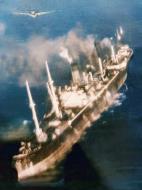
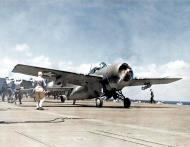
-10th-Oct-1942-80-G-16286s.jpg)
-operation-Torch-Nov-1942-80-G-30311.jpg)
-25th-Aug-1942-80-G-11800.jpg)
-circa-1942-NH-92492.jpg)
-reporting-location-of-lifeboats-2ndf-Apr-1943-80-G-040961.jpg)
-arriving-at-the-Fleet-anchorage.jpg)
-during-passing-out-trials-in-the-North-Sea-IWM-A10153.jpg)
-firing-her-guns-during-passing-out-trials-in-the-North-Sea-IWM-A10150.jpg)
-pulls-anchor-prior-to-leaving-Devonport-IWM-FL707.jpg)
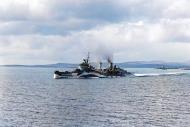
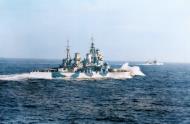
-TBF-1-Avenger-VT-4-pilots-lost-in-battle-Fagervika-Norway-on-4th-Oct-1943-Wiki1.jpg)

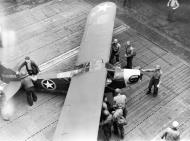
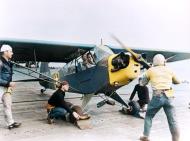
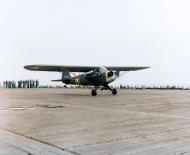
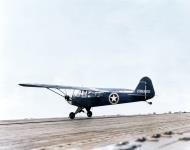

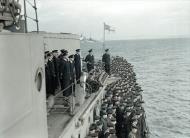
.jpg)

-rescuing-U-801's-survivors-sunk-by-aircraft-USS-Block-Island-(CVE-21)-and-surface-ships-17th-Mar-1944-80-G-222851.jpg)
-underway-off-the-Boston-Naval-Shipyard-Massachusetts-25th-April-1942-PD122.jpg)
,-USS-Ranger-(CV-4),-and-the-USS-Saratoga-(CV-3)-passing-under-the-Golden-Gate-Bridge-12th-Nov-1936-NH-51386.jpg)
-5inch-Guns-on-alert-during-the-North-African-landings-Nov-1942-80-G-30309.jpg)
-after-construction-by-Newport-News-Shipbuilding-Newport-News-Virginia-June-1934-NH-893.jpg)
-anchored-in-Guantanamo-Bay-Cuba-10th-Nov-1939-80-G-391559.jpg)
-and-USS-Tuscaloosa-underway-during-the-air-strike-off-Bodo-Norway-4th-Oct-1943-IWM-A19594.jpg)
-anti-aircraft-gun-on-alert-during-the-North-African-landings-Nov-1942-80-G-30334.jpg)
-as-she-lies-at-anchor-at-Pearl-Harbor-Hawaii-01.jpg)
-as-she-lies-at-anchor-with-crew-members-lining-her-deck-01.jpg)
-at-Nob-Norfolk-hoisting-aboard-a-Grumman-J2F-5-Duck-20th-Sep-1941-80-G-391586.jpg)
-at-Norfolk-Naval-base-Virginia-on-7th-June-1934-NH-93545.jpg)
-at-Norfolk-Naval-base-Virginia-on-7th-June-1934-NH-93546.jpg)
-at-sea-with-mainly-Vought-SB2U's-10th-Nov-1939-80-G-391556.jpg)
-at-sea-with-mainly-Vought-SB2U's-10th-Nov-1939-80-G-391558.jpg)
-being-commissioned-Portsmouth-Virginia-1934-01.jpg)
-being-launching-at-Newport-News-Virginia-25th-Feb-1933-80-G-1007392.jpg)
-Capt-Calvin-T-During-CO-reads-a-'well-done'-message-Operation-Torch-Nov-1942-80-G-30373.jpg)
-carries-various-types-of-aircraft-as-Air-Group-4-during-1943-01.jpg)
-carries-various-types-of-aircraft-as-Air-Group-4-during-1943-02.jpg)
-carring-P-40-Warhawks-Operation-Torch-Nov-1942-01.jpg)
-during-a-Naval-fleet-review-taken-at-New-York-in-1939-NH-81163.jpg)
-during-a-Naval-fleet-review-taken-at-New-York-in-1939-NH-81183.jpg)
-during-a-Naval-fleet-review-taken-at-New-York-in-1939-NH-81184.jpg)
-during-a-Naval-fleet-review-taken-at-New-York-in-1939-NH-81185.jpg)
-during-a-shakedown-off-Pearl-Harbor-Hawaii-Nov-1944-80-G-469059.jpg)
-entering-Hunter's-Point-drydock-San-Francisco-California-2nd-Mar-1937-NH-51826.jpg)
-firing-her-guns-during-the-lead-up-to-the-North-African-landings-Nov-1942-80-G-30302.jpg)
-Grumman-F4F-4-Wildcats-VF-9-9-F-12-on-stand-by-operation-Torch-Nov-1942-80-G-30333.jpg)
-Grumman-F4F-4-Wildcats-VF-9-on-stand-by-operation-Torch-Nov-1942-80-G-30329.jpg)
-Grumman-TBF-1-Avenger-Commander-Donald-B-Overfield-operation-Torch-Nov-1942-80-G-30330.jpg)
-Grumman-TBF-1-Avenger-on-the-flight-deck-operation-Torch-Nov-1942-80-G-30327.jpg)
-Grumman-TBF-1-Avengers-on-the-flight-deck-operation-Torch-Nov-1942-80-G-30328.jpg)
-Grumman-TBM-Avenger-VB-4-pilots-aboard-group-photo-on-1st-Oct-1943-80-G-88059.jpg)
-in-port-in-1939-UA-46221.jpg)
-is-making-a-tight-turn-sea-trials-1940-01.jpg)
-just-after-launching-at-Newport-News-Virginia-25th-Feb-1933-NH-75708.jpg)
-just-after-launching-at-Newport-News-Virginia-25th-Feb-1933-NH-75709.jpg)
-lies-at-anchor-1940-01.jpg)
-lies-at-anchor-with-aircraft-neatly-aligned-on-her-deck-1940-01.jpg)
-Marines-and-sailors-manning-the-ship's-Mk-33-director-operation-Torch-Nov-1942-80-G-30318.jpg)
-NH-67857.jpg)
-off-Scapa-Flow-Scotland-with-the-Royal-Navy-home-fleet-Sep-1943-IWM-A19459.jpg)
-photographed-from-a-Naval-Air-Station-Hampton-Roads-Virginia-aircraft-on-6th-July-1944-80-G-236719.jpg)
-plane-captain-beneath-a-F4F-4-Wildcat-catches-a-few-winks-operation-Torch-Nov-1942-80-G-30323.jpg)
-refueling-from-USS-Housatonic-(AO-35)-in-the-Atlantic-17th-July-1942-80-G-12684.jpg)
-refueling-from-USS-Housatonic-(AO-35)-in-the-Atlantic-17th-July-1942-80-G-12686.jpg)
-rush-aft-to-look-for-a-submarine-during-operation-Torch-Nov-1942-80-G-30299.jpg)
-signal-flags-fly-from-halliards-by-the-carrier's-island-circa-mid-1942-80-G-K-13484.jpg)
-transits-through-the-Panama-Canal-in-1945-01.jpg)
-underway-at-sea-during-the-later-1930s-80-G-428440.jpg)
-underway-in-Hampton-Roads-Virginia-18th-Aug-1942-80-G-10783.jpg)
-underway-in-Hampton-Roads-Virginia-18th-Aug-1942-80-G-10786.jpg)
-USS-Lexington-(CV-2)-and-Saratoga-(CV-3)-at-anchor-off-Honolulu-Hawaii-01.jpg)
-view-of-radars-and-other-antennas-with-signal-flags-flying-Feb-1943-80-G-K-1069.jpg)
-view-taken-off-Culebra-Puerto-Rico-circa-1940-NH-82497.jpg)
-view-taken-off-Culebra-Puerto-Rico-circa-1940-NH-82498.jpg)
-with-Comdr-John-M-Hoskins-and-others-in-the-catwalk-in-foreground-Grumman-F4F-3-Wildcat-VF-5-27th-Aug-1941.jpg)
-with-USS-Langley-(AV-3)-at-Naval-Air-Station-(NAS)-North-Island-San-Diego-California-NH-91368.jpg)
-with-USS-Langley-(AV-3)-at-Naval-Air-Station-(NAS)-North-Island-San-Diego-California-NH-91369.jpg)
-working-with-the-Royal-Navy-home-fleet-Sep-1943-IWM-A19326.jpg)
-working-with-the-Royal-Navy-home-fleet-Sep-1943-IWM-A19327.jpg)
-working-with-the-Royal-Navy-home-fleet-Sep-1943-IWM-A19328.jpg)































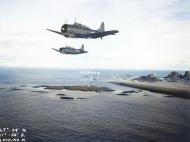

-21st-June-1934-80-G-391498.jpg)
-21st-June-1934-80-G-391497.jpg)
-and-HE-Wallace-made-first-landing-aboard-Ranger-21st-Jun-1934-80-G-391499.jpg)
-Aug-1942-80-G-35100.jpg)
-1943-80-G-35081.jpg)
-19th-Nov-1941-80-G-391590.jpg)

